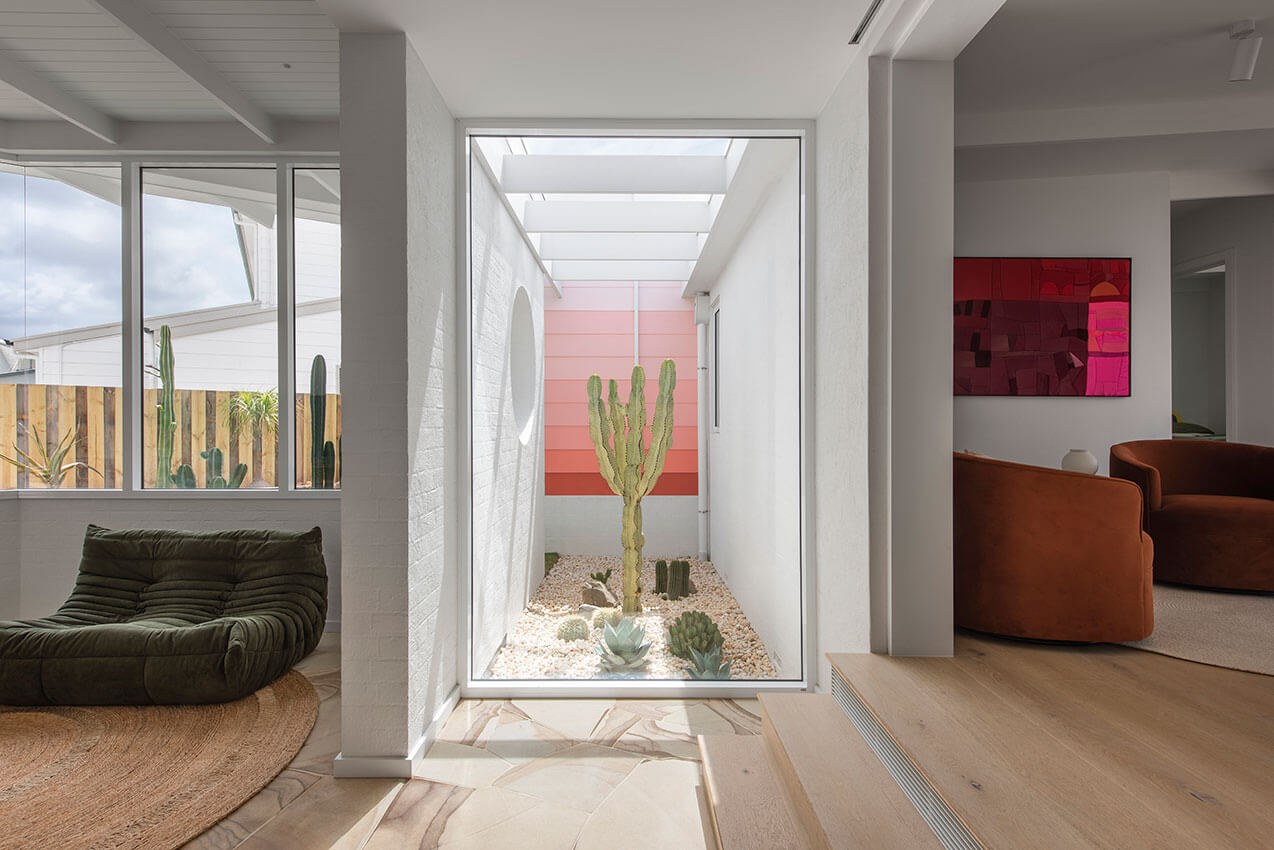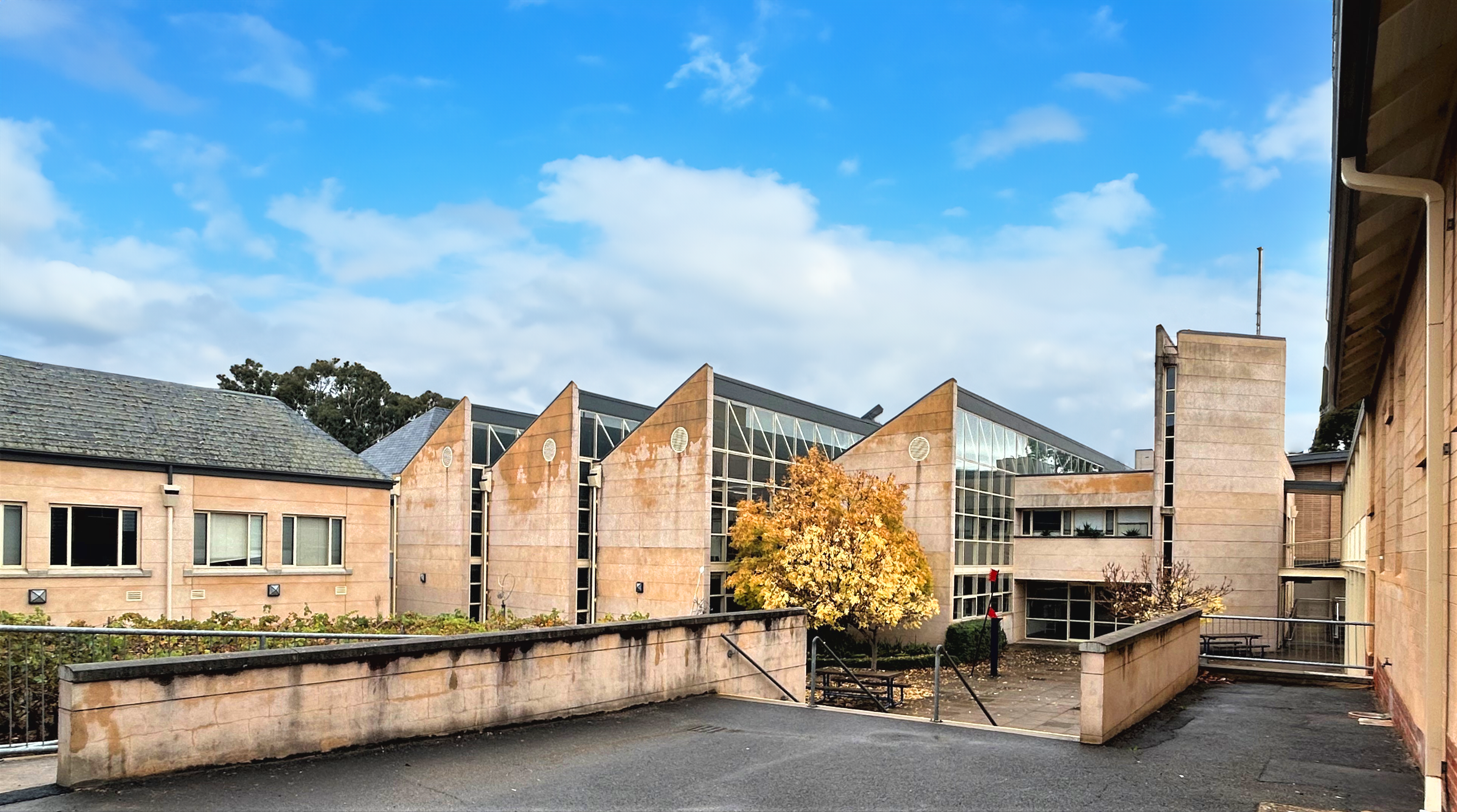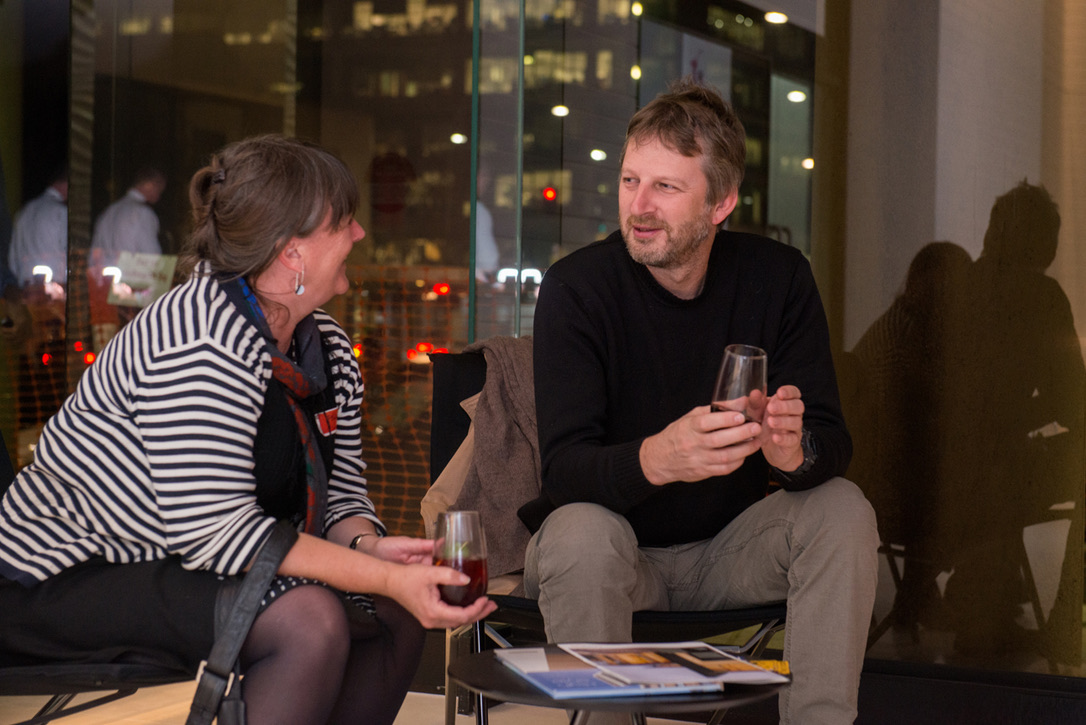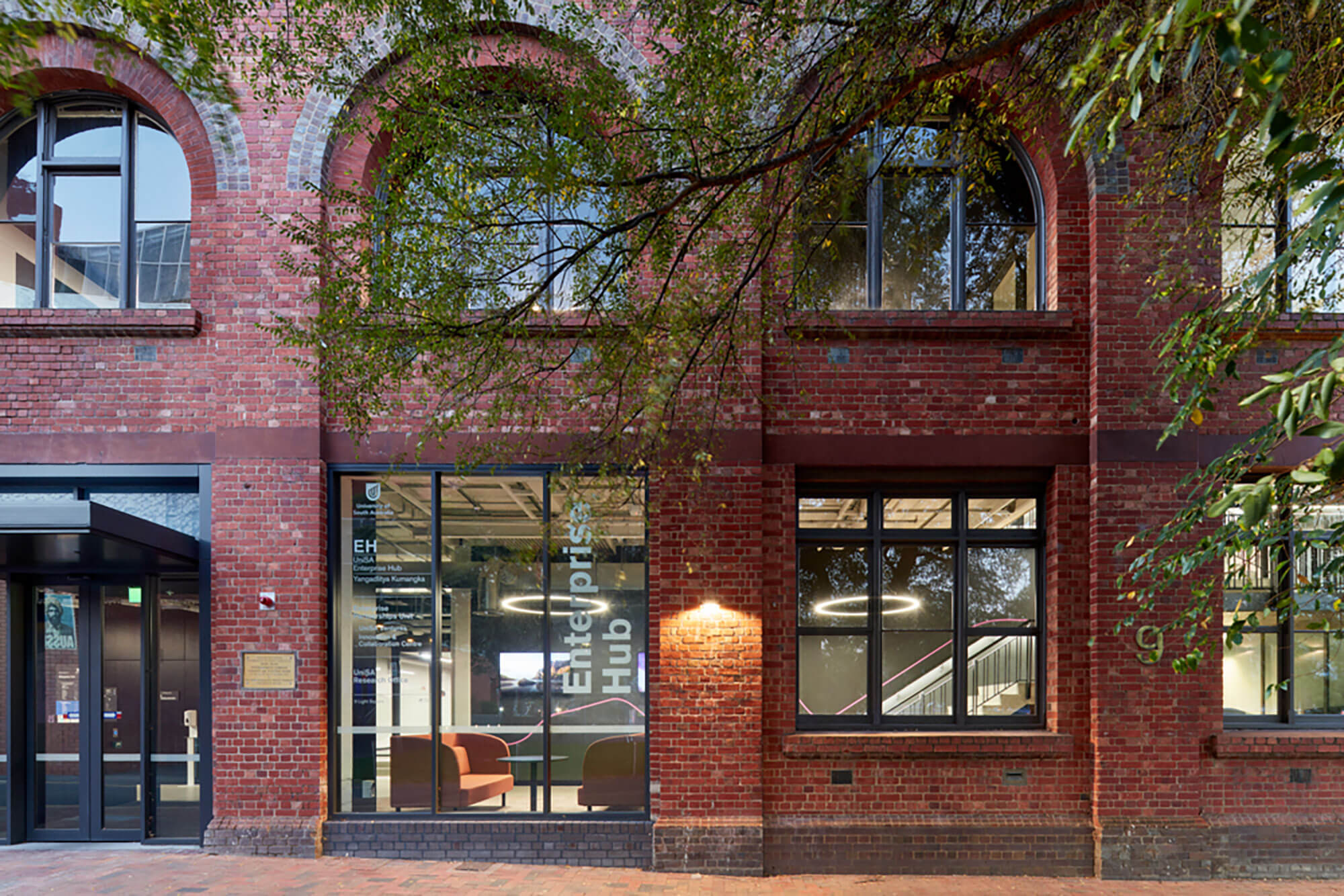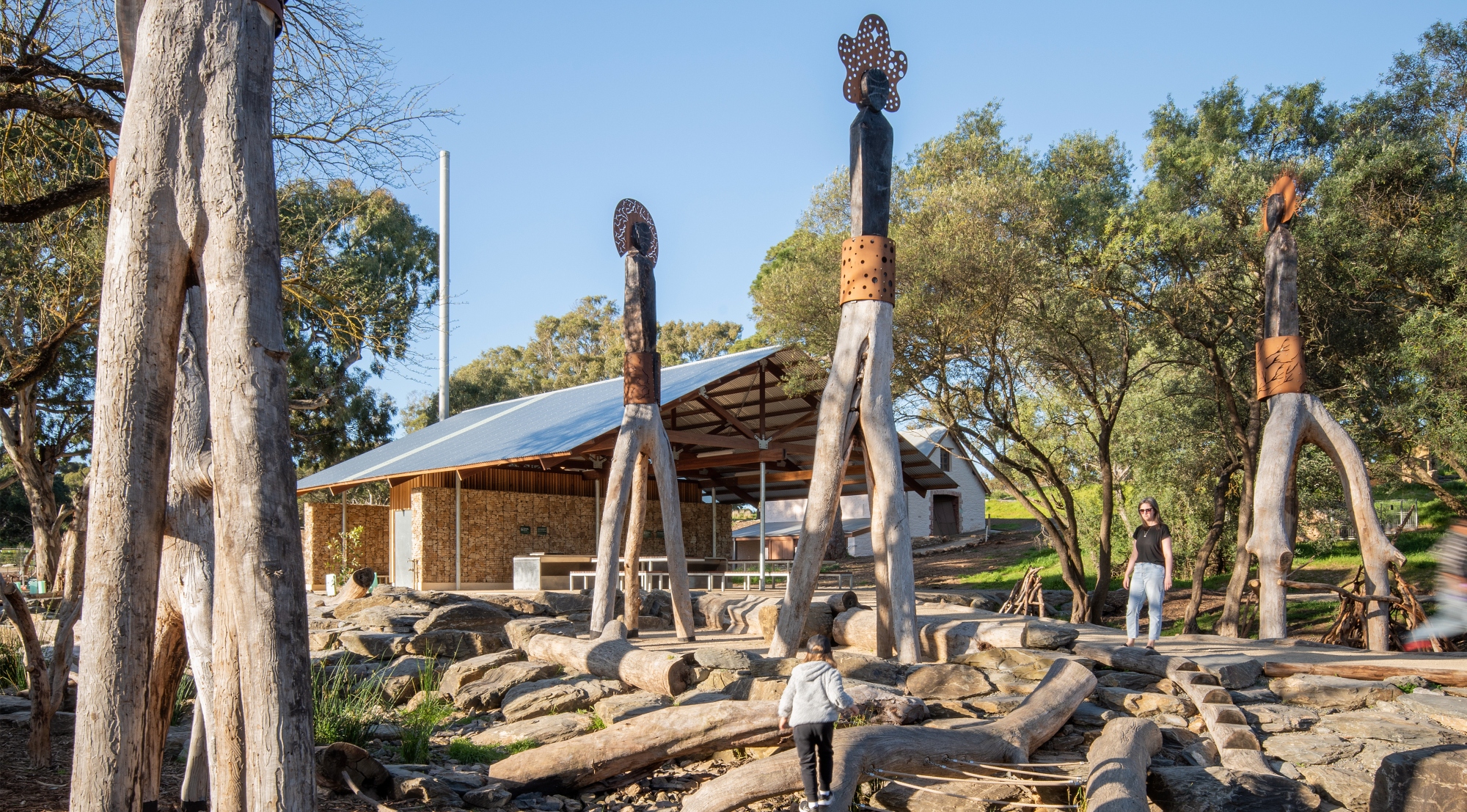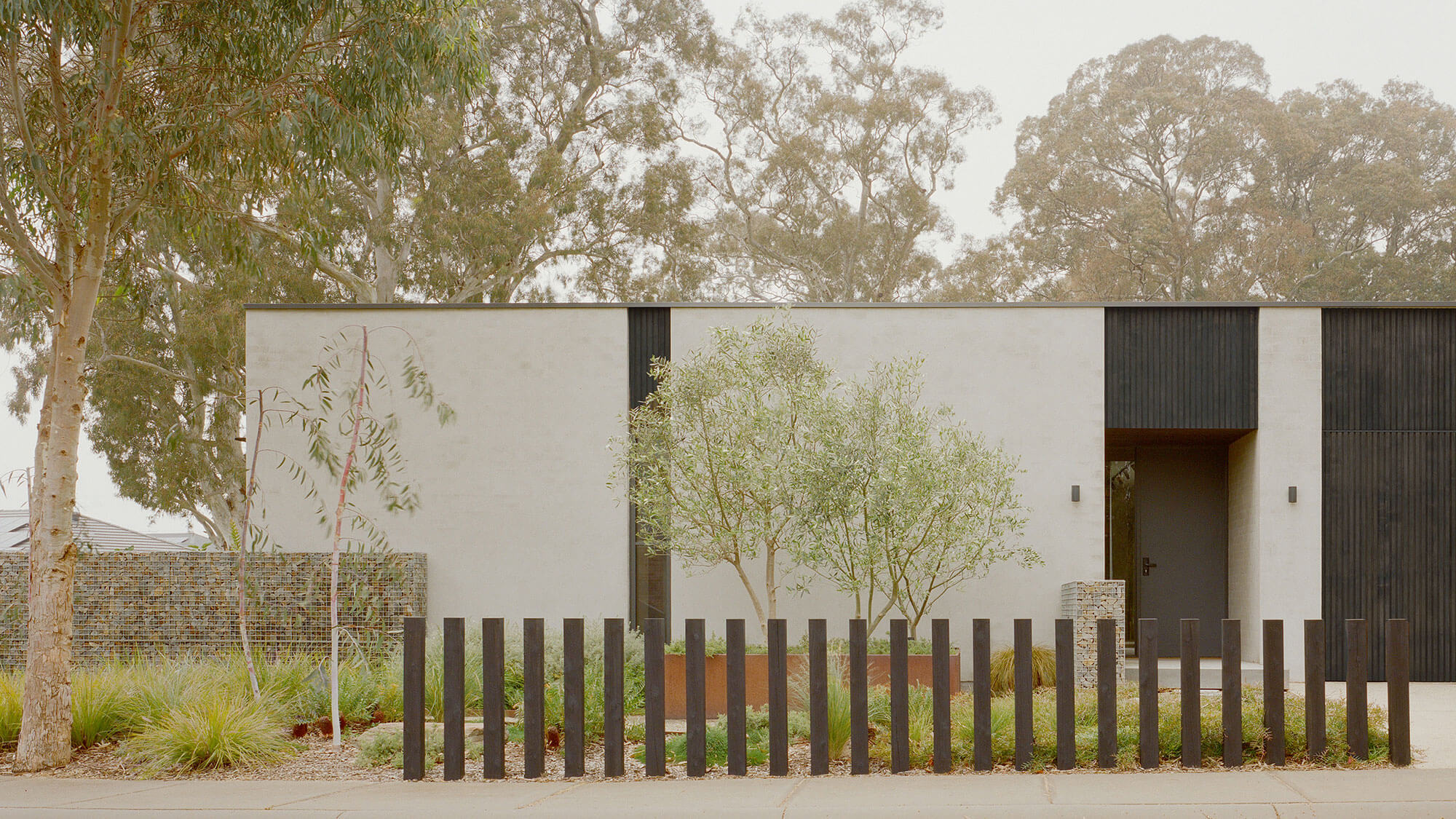2024 SOUTH AUSTRALIAArchitecture Awards Winners
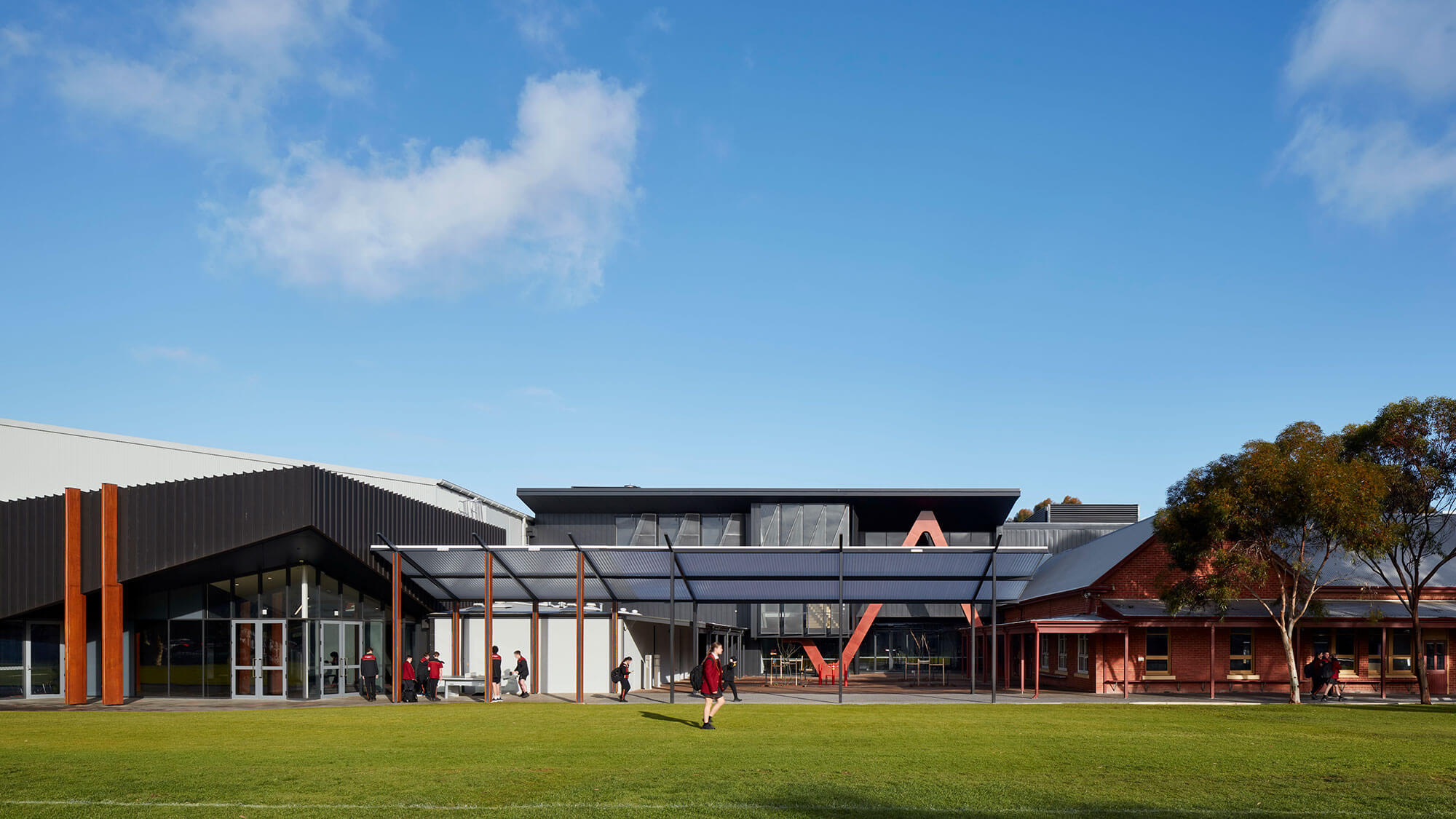
2024 SA Architecture Awards
2024 South Australia Architecture Awards - results
The Australian Institute of Architects Awards program offers an opportunity for public and peer recognition of the innovative work of our South Australian architects.
The program also provides the Institute with a valuable mechanism to promote architects and architecture within South Australia, across Australia and internationally.
Table of Contents
2024 South Australia Architecture Awards and Prizes
SA Architecture Medal
Evergreen community precinct | Walter brooke
&
Sunkissed higgins | rads
Jury citation
This year’s jury has bestowed The Chapter’s highest honour on two projects that epitomise excellence in design and community integration. This decision was reached following robust discussion of the relative merits of the shortlisted projects and the impact that the projects will make on the public perception of the value of architecture. While very different in scale, location and function, Evergreen Community Precinct by Walter Brooke and Sunkissed Higgins by RADS both stand as exemplars of innovation, sustainability, and social cohesion, occupying a distinctive niche within their respective contexts.
Evergreen Community Precinct redefines conventional notions of a funeral and burial site, transcending its primary function to become a vibrant communal space. The café has become a meeting place for locals, there is a children’s play space and people are booking the function spaces for weddings and other gatherings. And, of course, funeral services are held in the tranquil, reflective interior.
Walter Brooke’s design ethos is eloquently expressed through the seamless blending of public and private realms. This is a physical manifestation of the client’s objective to promote inclusivity and unity. The organic form, variety of spaces and thoughtful circulation pathways invite interaction, fostering a sense of belonging for diverse users. Skilfully designed to be seen in the round, service spaces are subtly and seamlessly integrated.
Moreover, the project’s commitment to environmental stewardship and material permanence set a new benchmark. The precinct brings people together to live and celebrate life and to consider death as part of life’s journey.
In counterpoint to this sculptural, public building, Sunkissed Higgins by RADS captivates with its ingenious adaptation of an existing beach shack into a compact, contemporary family home on the Fleurieu surf coast. Eschewing conventional teardown-and-rebuild approaches, RADS shows a profound respect for both the existing built fabric and the environment.
Playful elements, from the skate-ramp driveway to the sun-drenched living spaces, evoke a sense of joy and connection to its physical and community surroundings. The articulated plan will also support multigenerational living in the future if required. Through clever planning, meticulous detailing and an astute awareness of its surroundings, Sunkissed Higgins is an outstanding example of what can be achieved when client and architects’ values align.
It provides a canvas on which life can be lived to the full.
Evergreen Community Precinct and Sunkissed Higgins both define architectural excellence, seamlessly integrate with their diverse communities and pushing the boundaries of sustainability and innovation. Their collective recognition underscores the transformative power of generosity in architecture in two very different building typologies and contexts, and the varied ways in which architecture adds value.
The City of Adelaide Prize
60 King William | Cox Architecture
Jury citation
An impressive addition to King William Street and James Place, the elegance and quality of 60 King William delivers strongly on its conceptual framework and intentions, respectfully enhancing public experience in the precinct. The podium references the context of scale of both frontages and grounds the tower.
The jury were impressed by the consideration of user experience, with design aspects that reflect the established culture of both sides of the building – grand civic and commercial on King William Street and fine grain retail and cafes on James Place. The creation of Kings Laneway between the two provides activation, supports diverse use, and fosters pedestrian circulation.
As more tenancies become occupied, additional activation of the building will continue to enrich its contribution to the city fabric over time.
City of Adelaide Prize Commendation
Frida & Diego: Love & Revolution Exhibition | Grieve Gillett Architects
Jury citation
This colourful and vibrant exhibition showcased a strong collaborative approach. Working with AGSA curators and collection representatives, GGA’s architectural vision resulted in a meaningful and immersive experience. The partnership with the Adelaide Economic Development Authority provided a valuable extension of the exhibition to create a walking trail in the city, raising awareness and enticing visitation and engagement with a larger audience. We acknowledge the success of this exhibition as a cultural drawcard to Adelaide and applaud the team’s vision.

City of Adelaide Prize PEOPLE'S CHOICE
Frida & Diego: Love & Revolution Exhibition | Grieve Gillett Architects
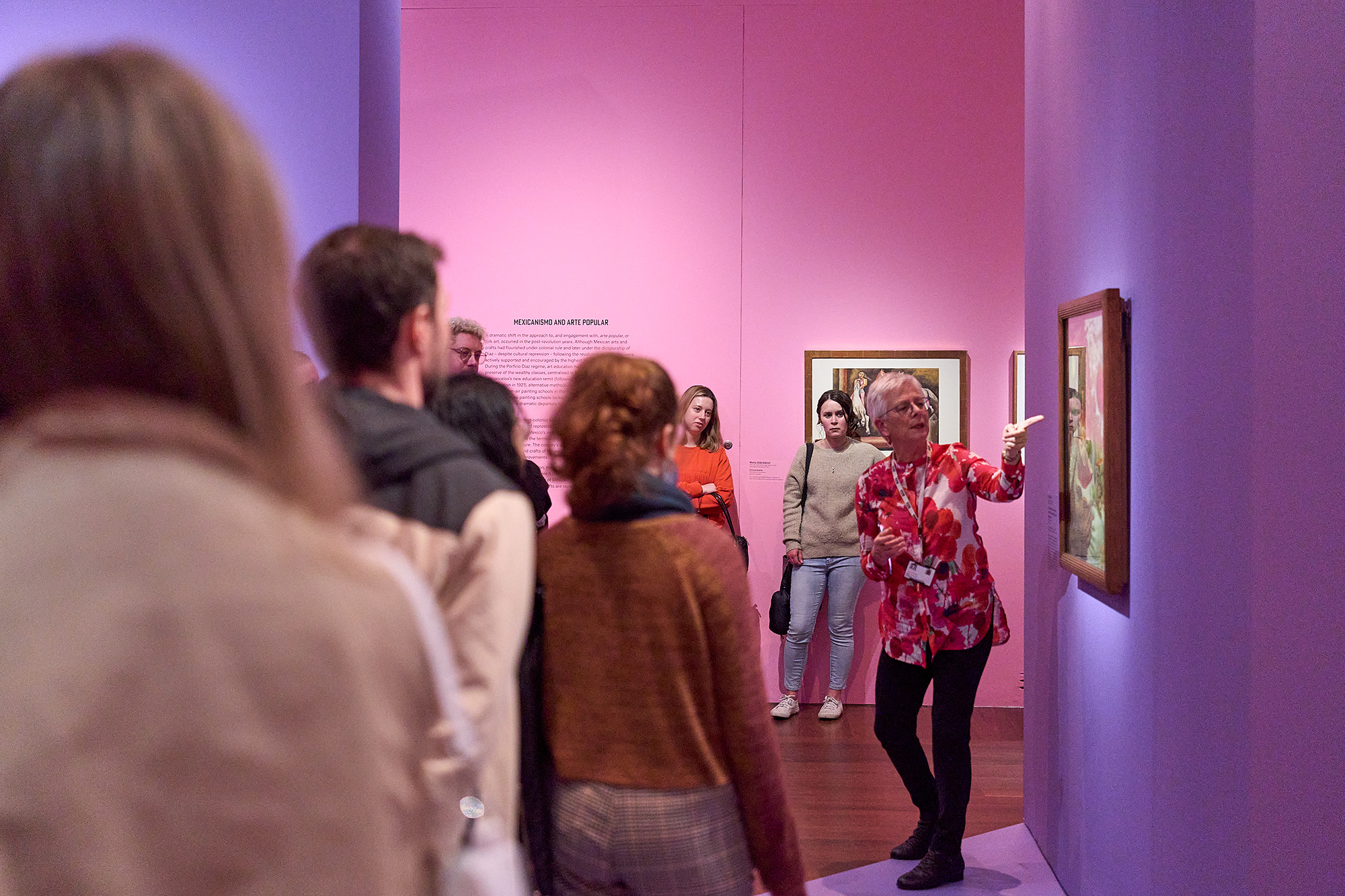
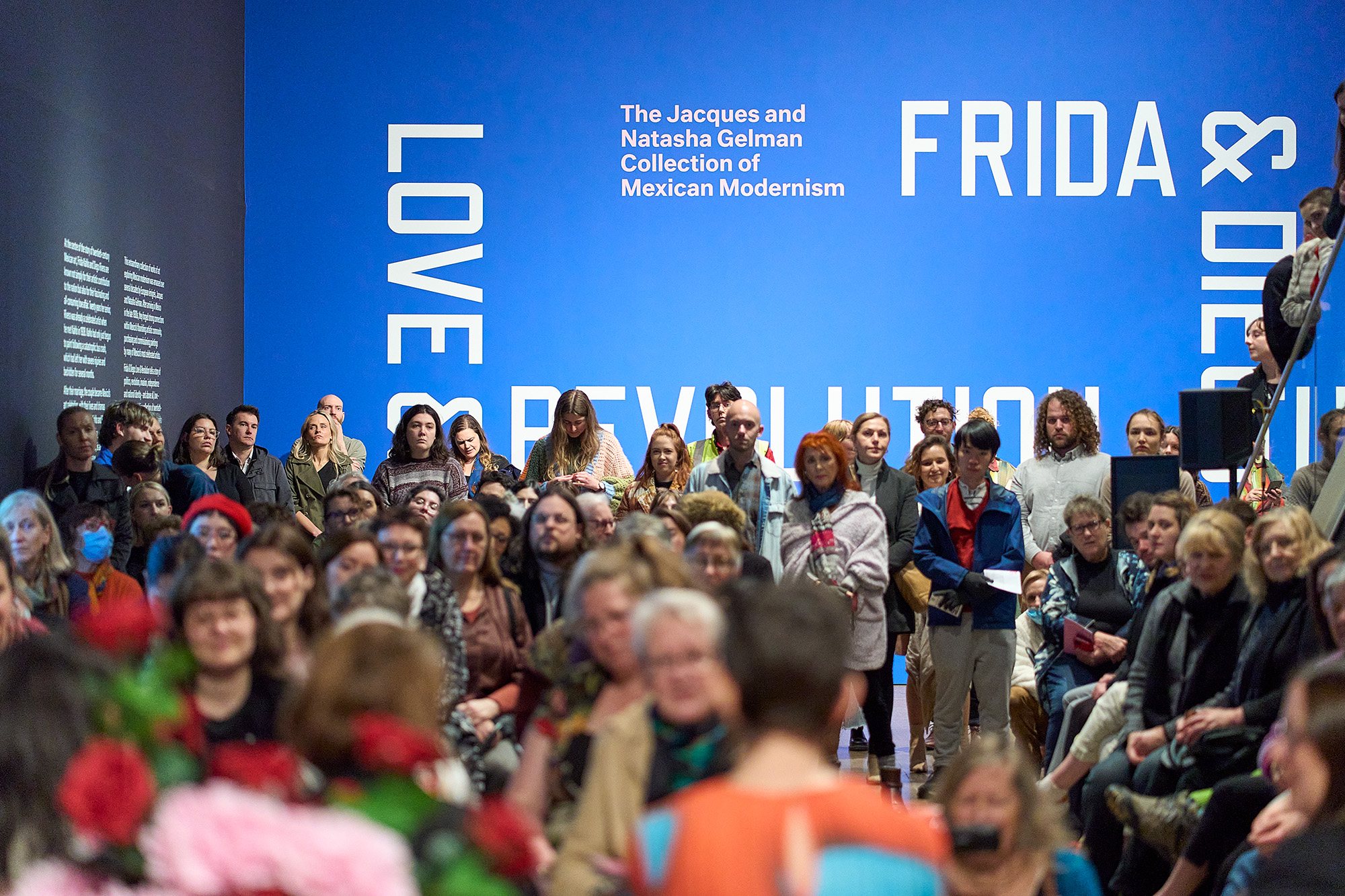
The Jack Cheesman Award for Enduring Architecture
St Peter's Collegiate School Science, technology and art centre | Geof Nairn Architects
Jury citation
The SCPS Science Technology and Art Centre was the first stage of a campus masterplan, also involving Geof Nairn Architects, to be realised. Located on a constrained site, the existing science building remained operational during construction of the new building. It was then comprehensively refitted to provide 12 laboratories.
The project realises the SPCS ethos to ‘cherish history while embracing the ever-evolving landscape of education’. The new building is clearly of its time, with saw tooth roofs and glazed facades providing ample natural light. The siting, roof pitch and rendered walls defer to adjacent sandstone buildings.
Internally, the well-serviced and thoughtfully planned art and technology spaces remain largely unchanged 25 year later. The laboratories, which combine theory and practical areas – an emerging idea at the time – also retain their fitout. This is a testament to the highly resolved design response which reflects the school’s needs.
Environmental systems were also advanced and include solar and wind power generation, water harvesting, movement controls, consideration of embodied carbon and HVAC design to optimise indoor conditions and operating costs. Systems were exposed to enable student monitoring and study.
The brief was for a facility that would serve multiple generations. The project continues to deliver.
EmAGN Project Award - sponsored by Alspec
Cabra Dominican College: Angelico Centre | Russell & Yelland Architects
Jury citation
Cabra Dominican College: Angelico Centre is recognised as this year’s winner of the EmAGN Project Award; a unanimous decision by the Jury.
The presentation strongly demonstrated Russell & Yelland’s commitment to fostering the professional development of its entire team. The whole Practice should be proud of this, as it is a highly commendable approach which the Jury are confident will have a compounding effect for many years to come.
The procurement of this project reinforced the early successes of Russell & Yelland’s dedication to such an intentional process. Rhiana Bell, the project lead and a beneficiary of past project experience and professional development, was empowered with a unique skillset to steer the project with confidence. She also maintained an approach of providing continual support, along with a platform for significant contribution, to the broader team.
The specific collaborative dynamic between Rhiana and Georgie Warren, with its clear flow of guidance and reciprocal learning, further exemplified this focus on nurturing talent.
As a result, the built outcome not only displays design excellence, but coupled with the exceptional guidance and demonstrated impact on younger team members, it sets up the Practice and team for future success. This makes Cabra Dominican College: Angelico Centre a very deserving winner.
Sir James Irwin President's Medal
Felicity Sando, FRAIA and Anthony Coupe, FRAIA | Mulloway Studio
Jury citation
Having spent some time looking back over the careers of this year’s co-recipients, there is an extremely clear focus on community, identity, and place, which is central to both their practice and their broader professional engagements. It gives me great pleasure in recognising Felicity Sando and Anthony Couple as the corecipient’s for the 2024 Sir James Irwin President’s Medal.
Shortly after graduating, and while working at different practices, they formed Copal Design, working on a pro-bono basis to design a community and interpretive centre in the Lacandon Rainforest, Mexico. This was informed by an exhaustive consultation process with the Lacandon Maya community to understand the cultural and ecological context.
It is fair to say that this experience kicked off the enduring partnership that has now spanned over 30 years. Their architecture Studio was established in 1996, and while the practice has evolved over time, they have never looked back.
The work of their practice has been recognised for its contributions to cultural heritage, urban design, interpretive and exhibition design, conservation and architecture, receiving awards from the Institute, ALIA, DIA, UDIA PIA and others. They are an active voice in South Australia, as well as interstate and internationally, through involvement in projects, competitions, and exhibitions, including the Venice Architecture Biennale.
Outside of practice, both recipients are actively engaged with the legacy of our profession through their involvements with architectural education, ongoing participation with the SA Chapter, ICOMOS and Parlour and generous contributions to the Adelaide Fringe. The list goes on.
Ultimately, it is their shared commitment that enables them to pursue these symbiotic endeavours – a diverse and highly respected local practice as well as a suite of associated activities that explore and showcase Australian Architecture.
And so, it is with great pleasure that I announce Felicity Sando and Anthony Couple as the co-recipients for the 2024 Sir James Irwin President’s Medal.
Their thoughtful, and sustained contributions to practice and the wider architectural conversation can only further the importance and relevance of our profession, of which we are all beneficiaries. Congratulations again to Anthony Coupe and Felicity Sando of Mulloway Studio.
Commercial Architecture - Sponsored by fielders
Commendation for Commercial Architecture
60 King William Street | Cox Architecture
Jury citation
60 King William Street sets a new benchmark for office design, integrating industry-leading sustainability, wellness, retail and office functions, delivering a quality commercial outcome on Adelaide’s premier boulevard.
This landmark mixed-use development celebrates its context through the careful restoration of the heritage listed Sands and McDougall façade and podium design, and successfully mediates between the intimate scale of James Place and the King William Street precinct. This fine example of contemporary commercial architecture enhances Adelaide’s urban fabric and economic future.

Commendation for Commercial Architecture
Southern Ocean Lodge | Max Pritchard Gunner Architects
Jury citation
Rising from the ashes of Kangaroo Island’s catastrophic fires, Southern Ocean Lodge has been rebuilt; celebrating the best of it’s past, with subtle improvements. Guests enjoy an immersive experience in nature, enjoying expansive views while cocooned within the warm, sculpted stone and timber interiors.
Improvements in room design to enhance views and new self-contained accommodation options, together with a sophisticated approach to landscaping to better manage fire risk, create a memorable guest experience that exceeds the original.

Colorbond Award for Steel Architecture
COLORBOND commendation for Steel Architecture
carrickalinga shed | architects ink
Jury citation
Carrickalinga Shed celebrates rural vernacular architecture. Its simple form belies the sophisticated detailing and operable façade, designed in response to the exposed site. Following visits to existing farm buildings in the area, the decision was made to clad the home’s roof and walls with BlueScope Heritage Galv. While this product is not warranted for this application, the architects have detailed the building to facilitate sheet replacement should this be necessary, and the client is delighted with the robust aesthetic which will weather over time.
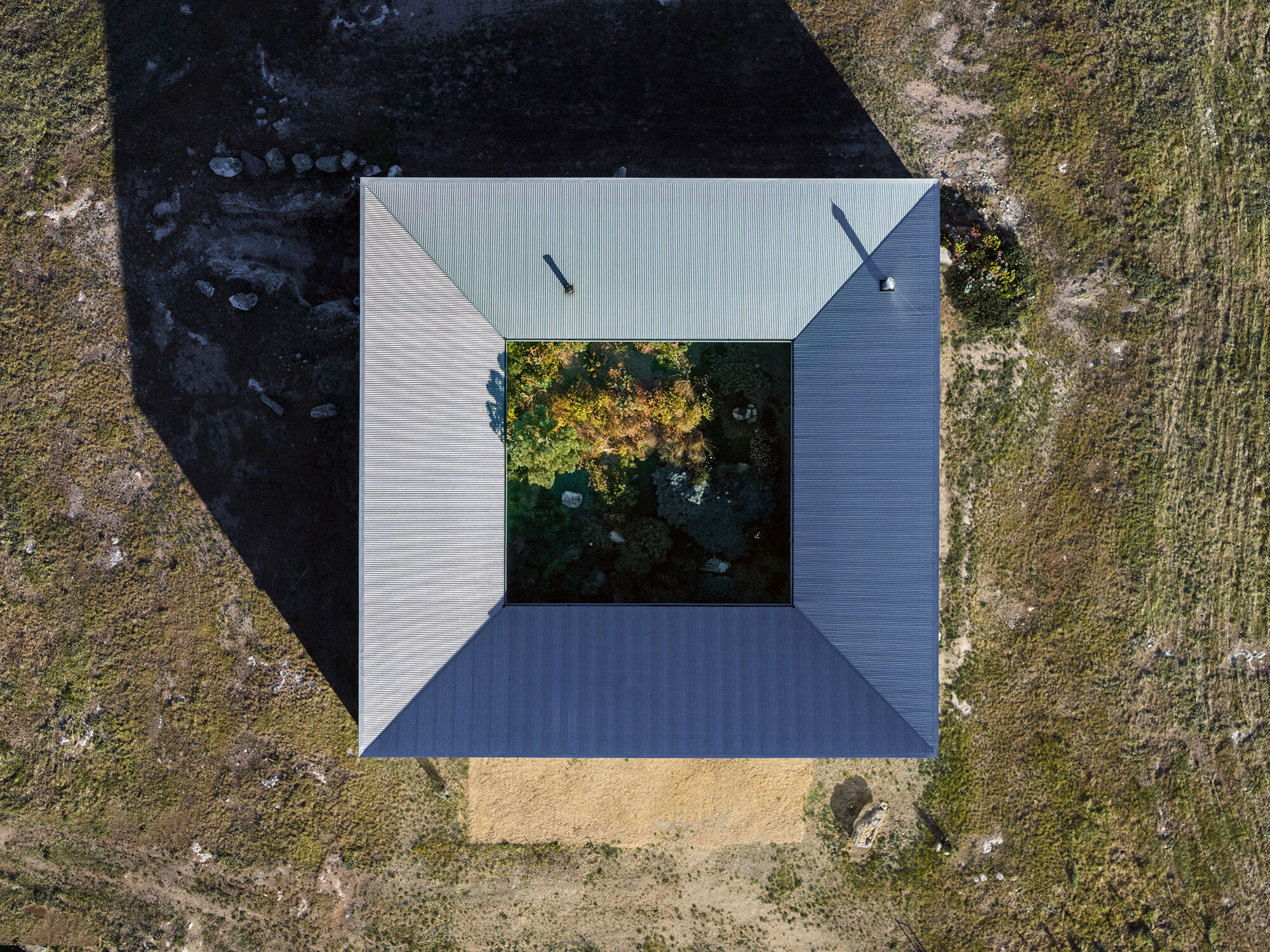
Educational Architecture
THE DR JOHN MAYFIELD AWARD FOR EDUCATION ARCHITECTURE
Scotch College Purruna Spencer Newton Centre | Hames Sharley
Jury citation
An unassuming elevation to Blythewood Road, largely concealed behind an existing olive hedge, belies the conceptual and technical skill demonstrated in the Purruna Spencer Newton Centre at Scotch College.
The Hames Sharley team has skilfully considered a topographically and contextually challenging site. The design respects the residential interface to the south, while celebrating the relationship to the established College to the north. It also relates to the College’s adjacent ‘farm’ and embraces views of the Adelaide CBD. The terraced landscape along the northern boundary ties the building to its environment, while the generous internal atrium, materials and detailing further enhance the connection to nature.
The achievements of the Purruna Spencer Newton Centre extend beyond the physical. The architects are to be applauded on their commitment to embedding First Nations consultation and principles within the design. They have also demonstrated a commitment to attaining a level of sustainability that sets a new benchmark for projects of this type.
This is not a building that shouts out its achievements. It confidently exemplifies the many ways in which architecture, at its best, can cater for the well-being of its users, the wider community, and the environment.
AWARD FOR EDUCATION ARCHITECTURE
Marnkutyi Parirna Theatre | Detail Studio
Jury citation
In creating a regional hub for performing arts, Detail Studio has carefully crafted a technically complex project into a nuanced building that sits harmoniously within its landscaped context. Meaningful First Nations involvement has delivered genuine, robust, site-specific outcomes that celebrate Kaurna stories and understandings of Country.
Internally, acoustic linings appear to float, creating a volume that embraces the audience. The elegant, pared-back material palette is consistent internally and externally, and celebrates Kaurna stories and understandings of Country.
The surge in student involvement post-opening highlights the success of the project. Providing educational opportunities for students across all facets of performance and production, the Theatre nurtures budding talent on-stage, as well as those occupied behind the scenes. Everyone benefits from the professional-grade sound and lighting systems, multimedia integration, adaptable staging arrangements, convertible orchestra pit, and resilient sprung stage.
Detail Studio’s achievement transcends the initial scope, delivering a venue that epitomizes grace and dignity while accommodating diverse demands.

Award for Educational Architecture
Nazareth Catholic college: Kidman Park Campus | russell & yelland architects
Jury citation
Nazareth Catholic College’s Kidman Park Campus offers a significant new senior school facility as part of its multi-campus R-12 college. Working on a restricted ‘brownfield’ site, the team has optimised the use of space, with the College contained within a single U-shaped building, wrapped around a landscaped courtyard.
Taking cues from the site’s market garden past, the curved sandblasted precast concrete and perforated mesh façade present a minimalist and clean finish to the building. A café located at the entry is a welcome arrival to the campus. Connected to the courtyard, the café serves as a central heart to the school, promoting meeting and collaboration.
The spatial programming provides clear delineation between key learning areas. Circulation rings the inner courtyard, giving rise to opportunities for informal gathering and interaction between staff and students as they transition between classes. Learning spaces are highly flexible and connect to open breakout areas for individual study.
The project builds identity and pride for the College community.
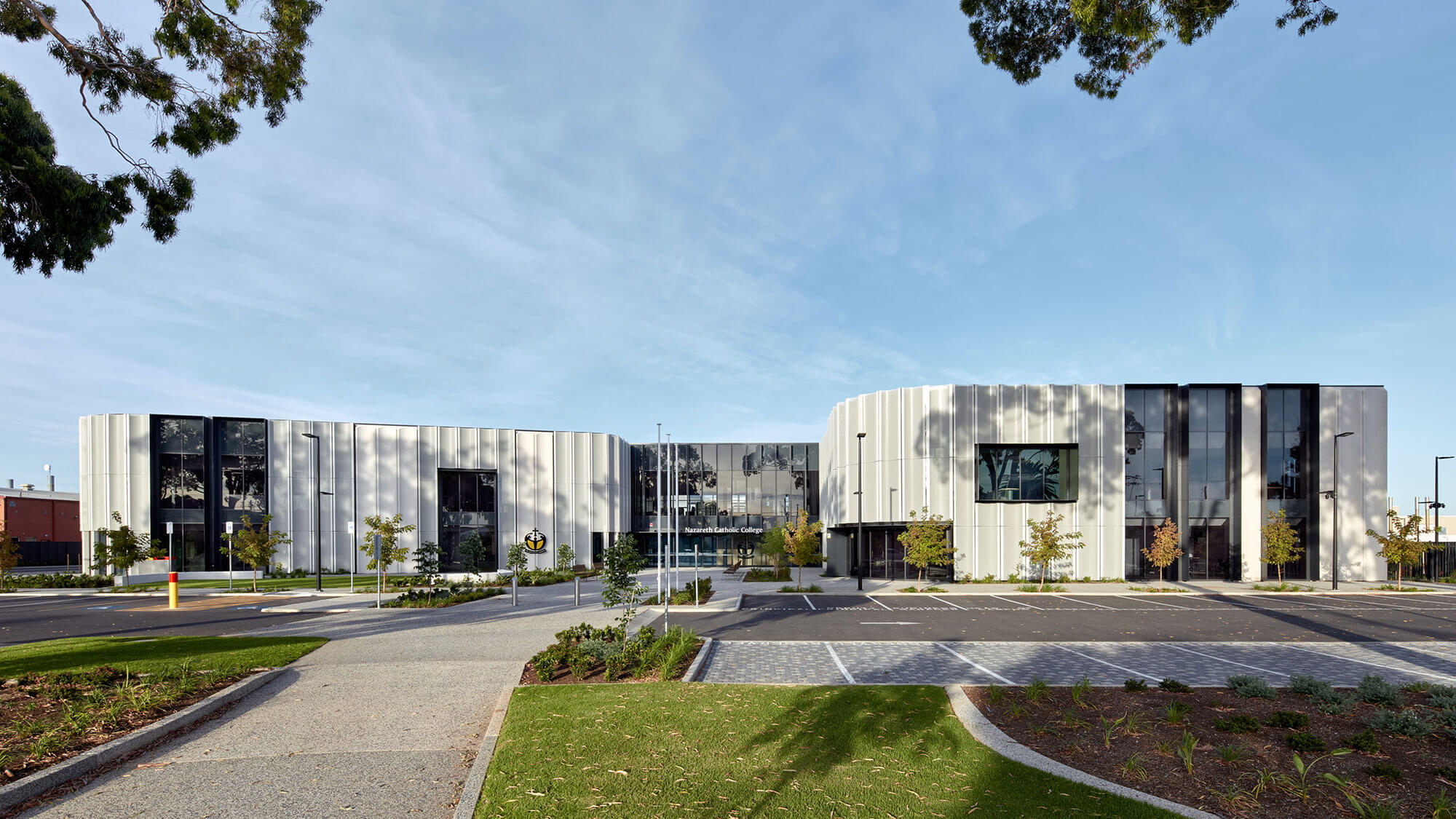
Commendation for Educational Architecture
Springbank Secondary College | Thomson Rossi
Jury citation
Thomson Rossi’s design team has adeptly re-envisaged two wings of a 1960s school building, leveraging its inherent strengths while catering to the unique needs of the College’s diverse student cohort. Meticulously detailed identities and material palettes in each wing foster pride and a sense of belonging. Seamless covered transitions between indoor and outdoor spaces ensure accessibility, safety, and visibility. Varied spatial environments empower the College community, providing interest, agency, and choice for students and staff alike.

Commendation for Educational Architecture
St Peters College Big Quad Rejuvenation | Matthews Architects
Jury citation
The Big Quad development at St Peter’s College breathes new life into Australia’s oldest continually used learning space. The redevelopment of a senior study hub provides a refined learning environment, meeting the needs of contemporary education while maintaining the culture of the College. Flexibility in the interconnected spaces allows mixed modes of teaching not previously possible in the cellular classroom structure. The reimagining of the Big Quad creates a sense of student ownership, accessible to students outside normal operating hours.
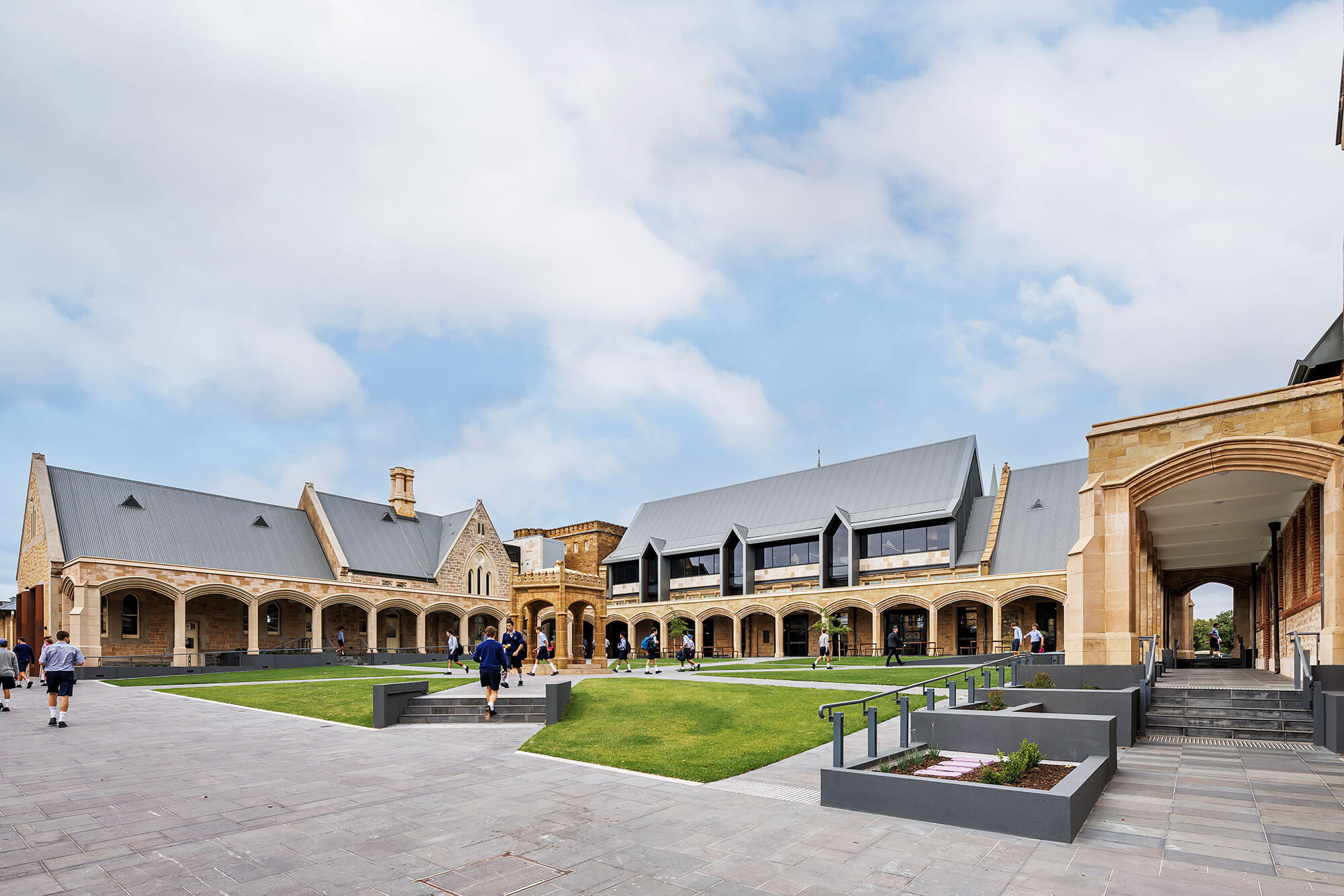
Commendation for Educational Architecture
Cabra Domenican College: Angelico Centre | Russell & Yelland Architects
Jury citation
Located on the site of a previous structure in a constrained location, the Angelico Centre addresses a need for new art, design and technology facilities at Cabra Dominican College. The design expression is distinctive and unique but also sits compatibly with the neighbouring structures; both recently built and heritage listed. The large structural element at the entry draws reference from heritage forms on the site while also acting as a memorable visual and physical statement.

Commendation for Educational Architecture
St John’s Campus Redevelopment | Brown Falconer
Jury citation
The St John’s Campus Redevelopment embraces architecture as a facilitator for learning and community. Driven by a philosophy of connectivity and sustainability, the design utilises nature-inspired elements. The new classroom building evokes a ‘treehouse’ charm, with the colour palette inspired by the adjacent mature gum trees. Sustainable principles are apparent, including adaptive reuse and the provision of eco-friendly materials. The design prioritises student comfort and engagement, creating dynamic spaces for learning; fostering curiosity and a deep connection to nature.
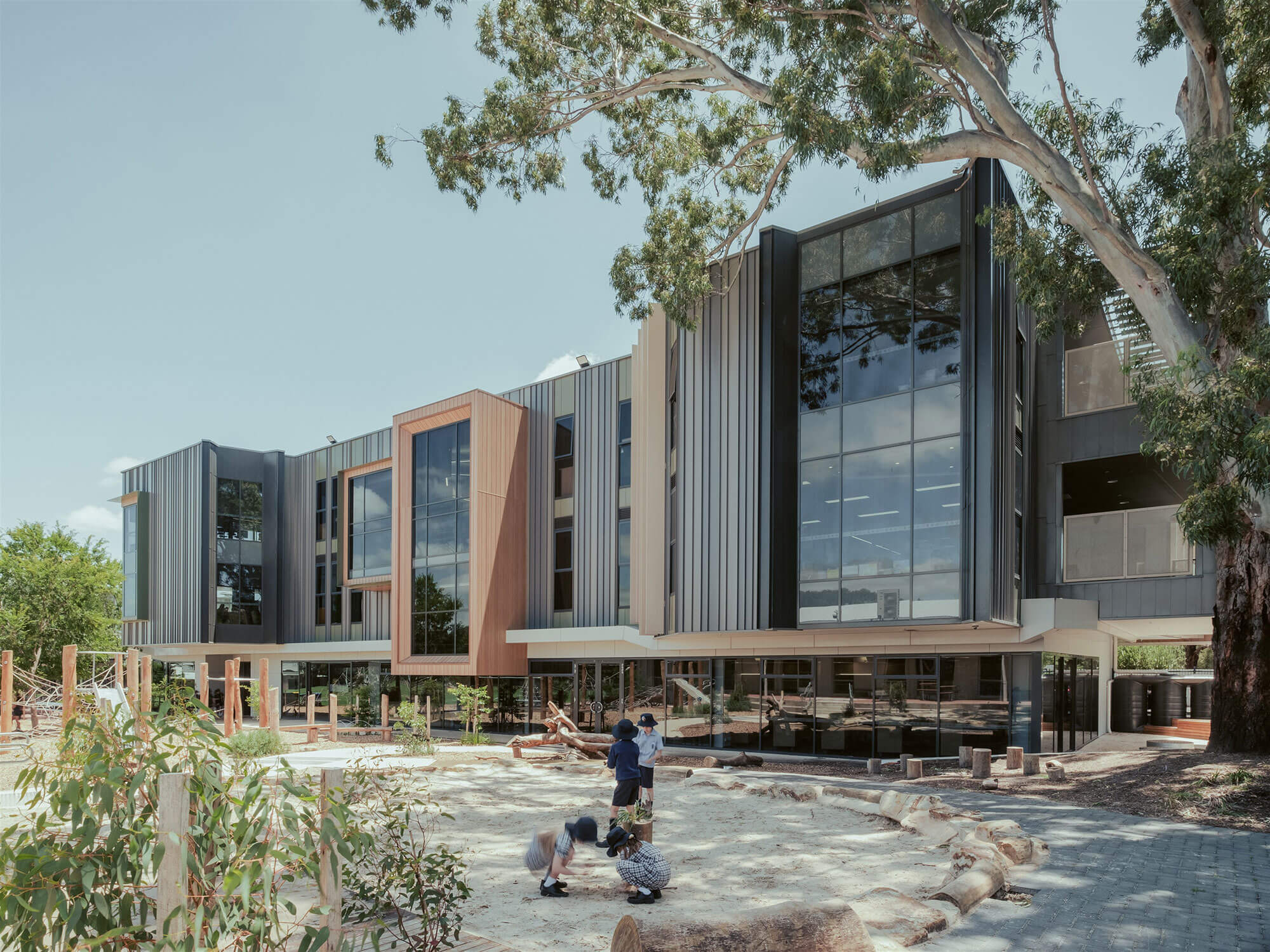
Commendation for Educational Architecture
Stradbroke Primary School - Early Learning Hub | Das Studio
Jury citation
Nestled against the backdrop of the Fourth Creek walking trail and a mature Eucalyptus canopy, this new development unfolds with a spacious veranda and integrated learning spaces. Clever reuse of an existing floor slab expanded the project scope to include the upgrade of neighbouring classrooms. A direct external connection to the new building is established through a bold yet contextual colour palette. A well-considered floor plan links learning spaces to a central communal area, featuring delightful architectural detailing and expression.

Heritage Architecture
The David Saunders Award for Heritage Architecture
UNISA Enterprise Hub | Swanbury Penglase
Jury citation
Recognised as one of the earliest remaining intact reinforced concrete buildings in South Australia, 9 Light Square – a Local Heritage Place and former hospitality venue – has been successfully revitalised to accommodate UniSA’s research and industry enterprises.
The Enterprise Hub is an exemplar of adaptive reuse of a heritage building. The successful reinterpretation results from the Architect’s comprehensive understanding of the building’s historical layers, which have been revealed and respected, without compromising the delivery of the brief.
New building insertions are a deliberate contrast to the original concrete structure, creating a clear distinction between old and new. The spaces created work in harmony with the building’s physical history and transformation over time, encouraging a sense of discovery throughout. Subtle modern insertions complement key historic features, which are seamlessly integrated within the new fitout. These include the brass ‘bird cage’ that marked the entry during the building’s nightclub phase.
This project has given a previously underutilised and dilapidated building a new life. The revelation and articulation of the original building and its former uses enhance the amenity and experience for occupants and the wider community.
Interior Architecture
THE ROBERT DICKSON AWARD FOR INTERIOR ARCHITECTURE
Cox Architecture Adelaide Studio | Cox Architecture
Jury citation
The jury was impressed with the way Cox Architecture Studio breaks with established office typology. Heralded on entry by the absence of a formal reception, the intention to create a collaborative, communal environment is visible from the outset.
The driving design principles of Community, Wellness and Craft foster a place of calmness and reflection, while also being the home of an energetic design studio. Space is arranged in neighbourhoods with flexible functions. These are linked by an internal public street defined by clay brick and natural fibre display walls.
The Public Forum is one of the heroes of the project. Embraced in brick, it engages with the wider studio community much like a town square. It is a place to reflect, engage, communicate, and celebrate.
Particularly impressive is the architect’s dedication to ‘doing more with less’. The decisions to remove the superfluous is both sustainable and celebrates the space by expressing the building’s primary structure. The exquisite use of sustainable locally sourced materials and artisan pieces generate identity and a sense of place.
The project demonstrates Cox’s sophisticated, rigorous and restrained architectural sensibility.
Award for Interior Architecture
mg house | Williams Burton Leopardi
Jury citation
The interior design of the Evergreen Community Precinct successfully blends functionality, harmony, and timeless elegance. The innovative circular plan cleverly segments the building’s primary uses. It optimises spatial efficiency while creating adaptable spaces for both intimate ceremonies and large gatherings.
Thoughtful furnishings provide comfort and dignity to visitors during their moments of reflection and commemoration. Views to internal gardens further enhance the atmosphere, inviting visitors to connect with nature and find moments of peace.
Limestone walls and accents infuse the interiors with a sense of solidity and serenity. Whether in the formal reflection rooms with their timber highlights, the inviting café space featuring dark forest greens, or the jewellery-box mirror detailing of the florist corner, the interior design exudes a sense of grace and reverence.
The interior spaces of the Evergreen Community Precinct serve as a testament to the power of architecture to uplift the human spirit and foster meaningful connections within a space of remembrance and celebration.

Award for Interior Architecture
Evergreen Community Precinct | Walter Brooke
Jury citation
The interior design of the Evergreen Community Precinct successfully blends functionality, harmony, and timeless elegance. The innovative circular plan cleverly segments the building’s primary uses. It optimises spatial efficiency while creating adaptable spaces for both intimate ceremonies and large gatherings.
Thoughtful furnishings provide comfort and dignity to visitors during their moments of reflection and commemoration. Views to internal gardens further enhance the atmosphere, inviting visitors to connect with nature and find moments of peace.
Limestone walls and accents infuse the interiors with a sense of solidity and serenity. Whether in the formal reflection rooms with their timber highlights, the inviting café space featuring dark forest greens, or the jewellery-box mirror detailing of the florist corner, the interior design exudes a sense of grace and reverence.
The interior spaces of the Evergreen Community Precinct serve as a testament to the power of architecture to uplift the human spirit and foster meaningful connections within a space of remembrance and celebration.
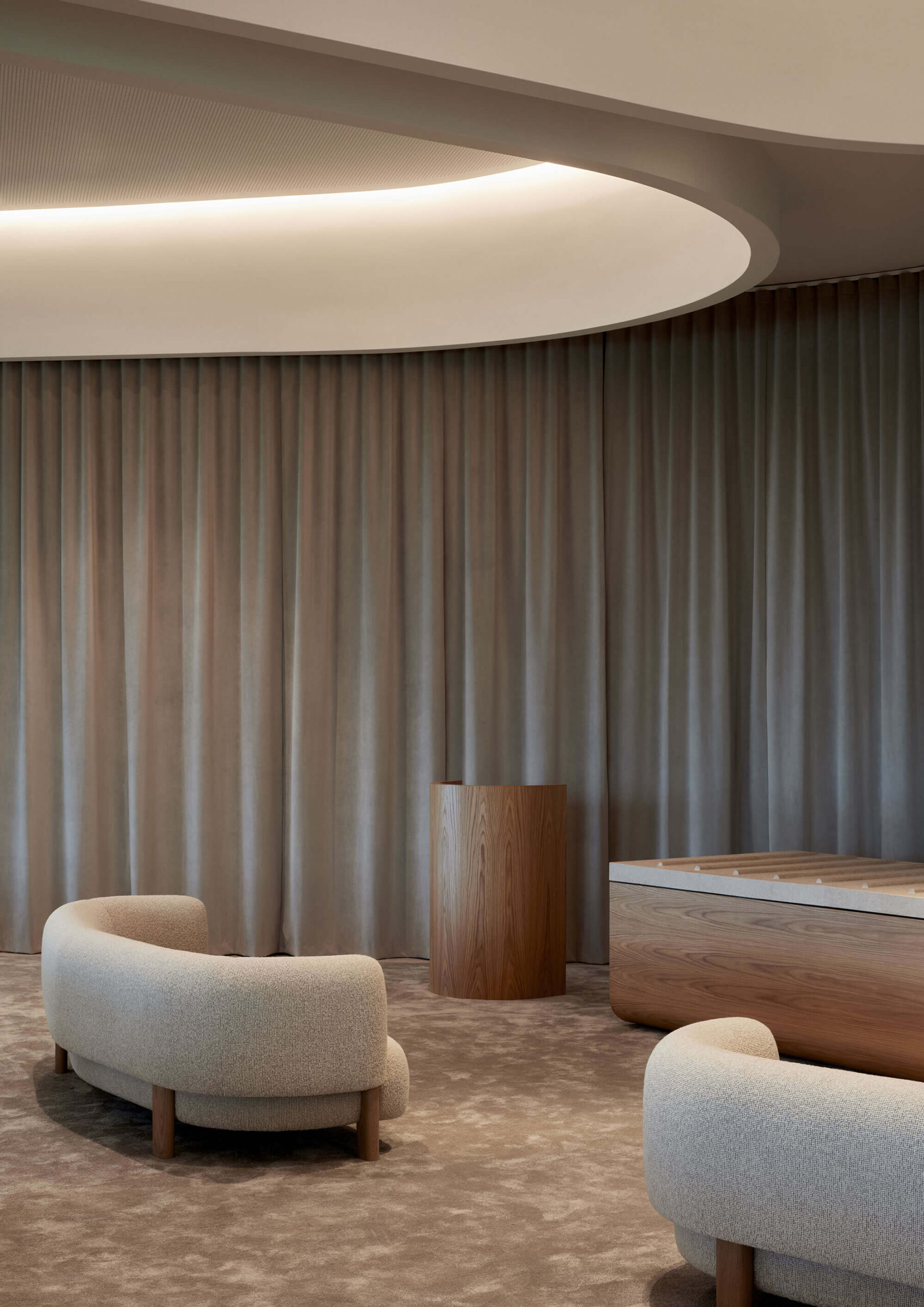
Award for Interior Architecture
Fugazzi Basement | studio gram
Jury citation
Fugazzi Basement epitomises warmth, ambiance, and thoughtful detailing. The transformation of a dormant ancillary area into a versatile function space, embodies studio gram’s balance of creativity with functionality.
At the heart of its charm, bespoke timber wall panels and furniture showcase a deep respect for craftsmanship. The rich timber with its soft curves creates intimacy, accentuated by warm lighting and soft furnishings.
Cosy yet sophisticated, the experience of space is heightened by carefully orchestrated material changes that play with light and shadow, adding drama and depth. The use of mirror wall panelling enhances the illusion of space and adds a touch of intrigue.
Elevating Adelaide’s culinary landscape, Fugazzi Basement is a nostalgic and captivating journey through the amalgamation of ‘experience-driven’ hospitality and exquisite design.

Commendation for Interior Architecture
Tiwu Kumangka (Blackwood Library and Community Centre) | DesignInc
Jury citation
Tiwu Kumangka cohesively combines a flexible community centre with a 21st-century public library. Clearly defined functional spaces are logically organised around a light-filled central entry void, which aligns with circulation in the surrounding precinct. The use of warm tones, earthy textures and curves throughout ties the interior to the landscape and generates calm in a highly activated public space.

Public Architecture
THE JACK McCONNELL AWARD FOR PUBLIC ARCHITECTURE
Evergreen Community Precinct | Walter Brooke
Jury citation
Evergreen Community Precinct embraces a holistic approach that physically anchors the architecture within its context and community. Thresholds that would typically separate public and private are buffered to transform the site from purely being an ‘end of life’ destination into one of connection and shared community.
The strong civic focus extends well beyond the boundary and invites the changing demographic of the area onto the grounds, with circular paths ushering movement throughout and the curved outline of the building removing any notion of front or back. The form acts as a democratic symbol, representing its varied and non-denominational patronage and neighbourhood – with a mission to destigmatise places of burial.
The client’s commitment to deliver a world-leading, quality precinct is heightened through innovative design. The texture and solidity of the materials convey permanence. Materials and systems also deliver on the objective to lessening the facility’s environmental footprint.
Consistency in quality, detailing and restraint across the entire site reinforces the building as a sculptural landmark and a totem for celebrating life by bringing people together. With the aim to strengthen community bonds well before the final ‘curtain call’, this is architecture that truly facilitates connection.
Award for Public Architecture
Yatala Labour Prison Redevelopment | Grieve Gillett Architects in assoc. with Guymer Bailey Architects
Jury citation
Yatala Labour Prison Redevelopment integrates a treatment methodology underpinned by dignity, humanising the correctional process. This approach benefits all stakeholders – prisoners, staff, and visitors.
Extensive global research has informed the integration of natural light, appropriate acoustic treatment, access to open space, embedding agency for those in custody. The planning and flow between spaces is clear and logical, generating a calmer environment. Improved emotional health and lessened agitation are the result.
The use of improved technology enhances passive surveillance, leading to staffing efficiencies. Transitioning away from more familiar correction methods, the public interface is built upon a ‘hard out, soft in’ approach, reinforcing separation and protection. In an already pressurised system, the approach aims to avoid habitual relapse into crime, stimulating a rehabilitation mindset.
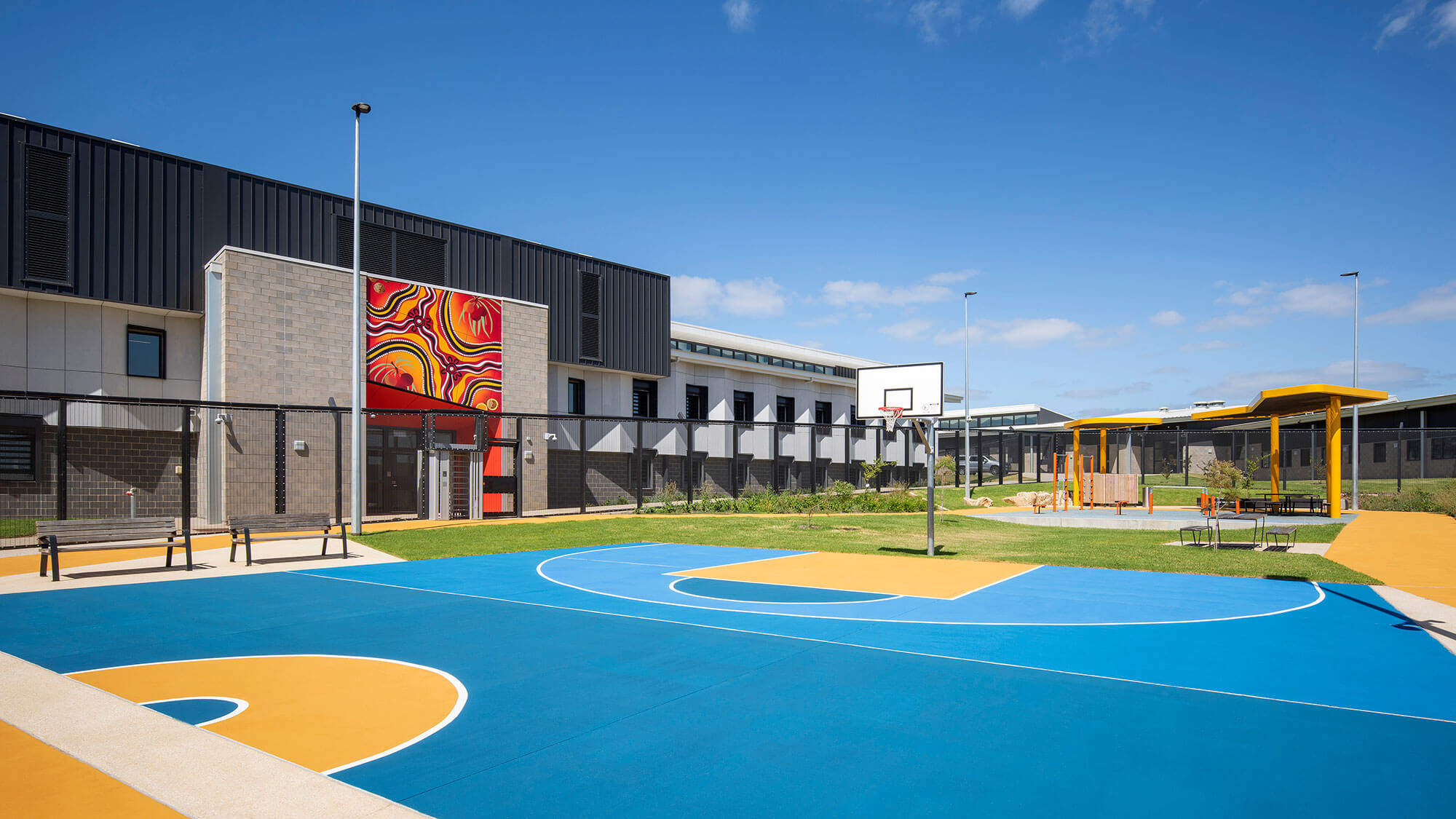
Award for Public Architecture
Tiwu Kumangka (Blackwood Library and Community Centre | DesignInc
Jury citation
Forming part of a larger masterplan to enhance the site as a core meeting place, Tiwu Kumangka, combines existing Library and Community Centre functions into one two-story building. Areas for quiet reflection, focused and group work are balanced by larger spaces for play and learning and cater to users of all ages and abilities.
On approach, the overall form feels domestic in scale, and the deliberate decision to contain the volume ensures it remains welcoming and unimposing. The dedicated community hall on the upper level pulls the public into the space, while an adjacent deck provides access to natural light, air and space for an expanded audience when needed.
The project utilises scale, positioning and integrated landscaping to deliver an enduring public place within a transformative urban context.
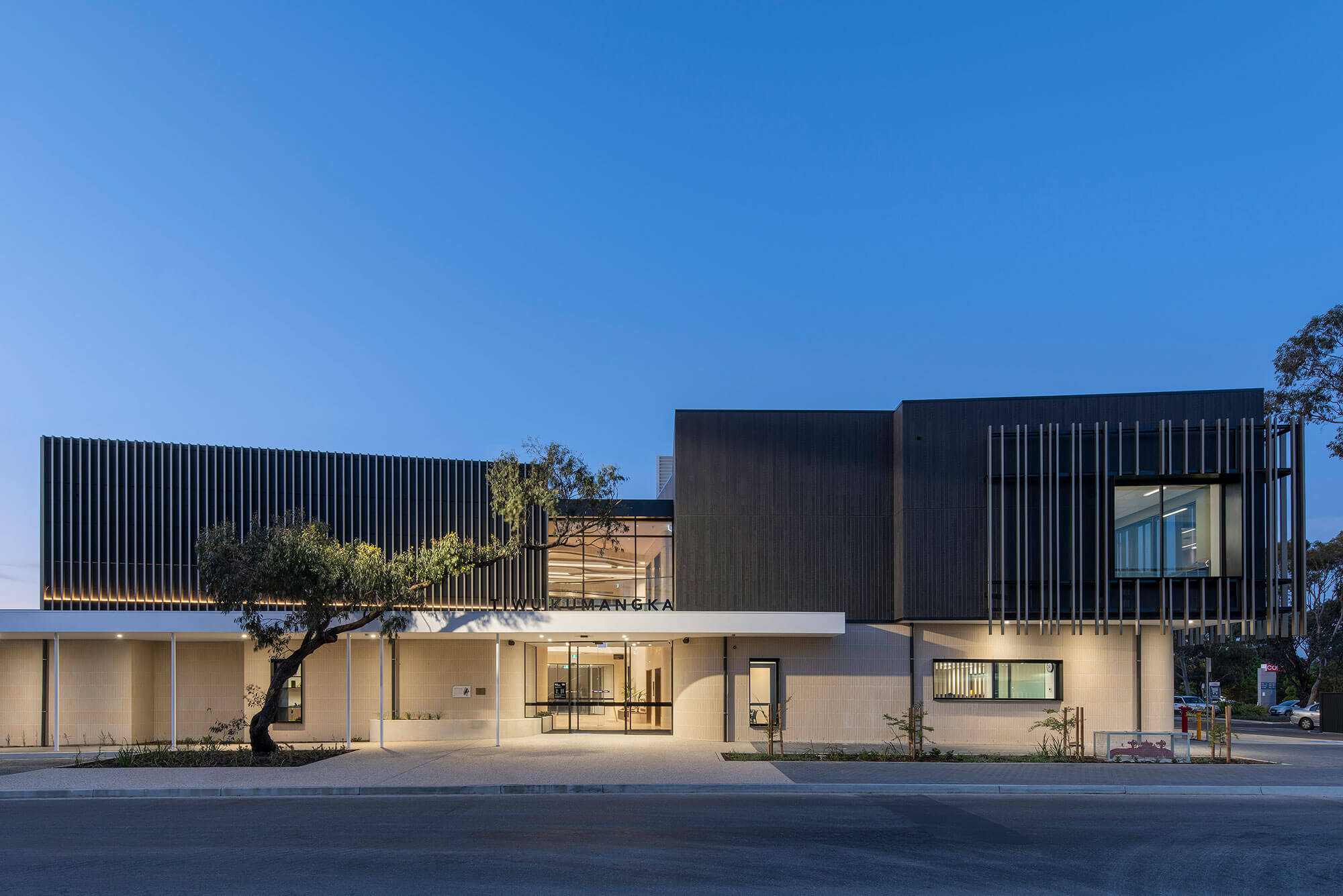
Commendation for Public Architecture
Memorial Drive Centre Court Stage 2 | Cox Architecture
Jury citation
Memorial Drive Centre Court Stage 2 seamlessly links to Adelaide Oval logistically and formally. The archways, and ivy-covered walls of the heritage façade pay homage to the past. Flexibility and innovation underpin the design, enabling use for sporting events, training and Tennis SA operations, as well as music events and functions throughout the year. The project increases activation of the precinct and delivers municipal value to the City of Adelaide.
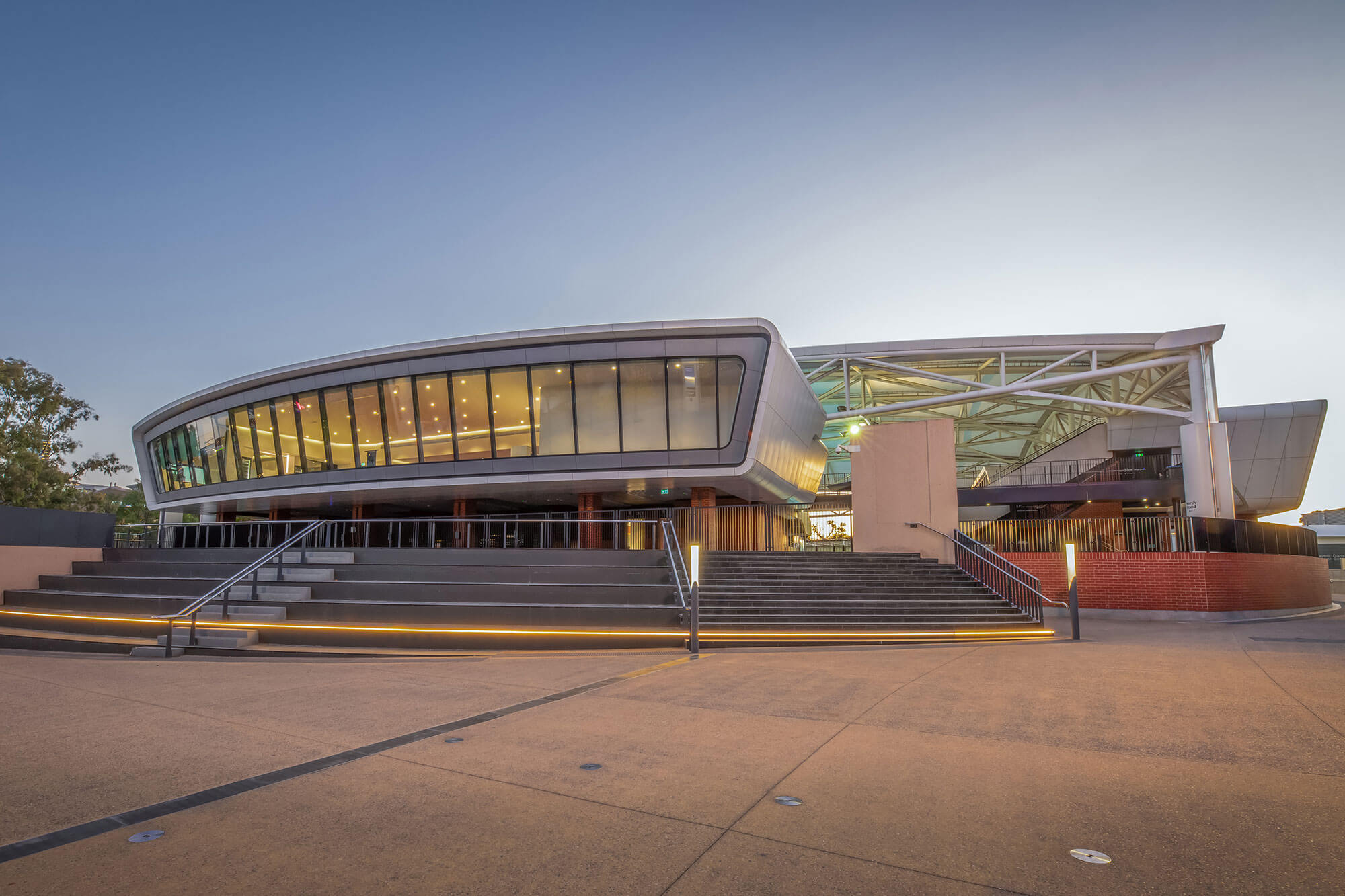
Urban Design
THE GAVIN WALKLEY AWARD FOR URBAN DESIGN
Glenthorne National Park - Ityamaiitpinna Yarta Visitor Hub | Phillips/Pilkington Architects + T.C.L with Karl Winda Telfer
Jury citation
Set within an early settlement site with a heritage overlay, ruins of the existing homesteads and working sheds remain, establishing the tone. The new pavilions sit at flattened breaks within the sloping terrain amongst a newly conceived context of meandering nature play and commissioned First Nations artworks. Educational and informative, the story of place is evident throughout, with the new forms allowing for groups to gather and protection from the elements.
Cooking, cleaning, dining, and toilet pavilions sit comfortably within the context, linked by a fully accessible pathway. Composed of robust and resilient materials that reference the unique Australian flora, the simple forms represent some of the earliest understandings of shelter.
The clear integration between the architect, landscape and build teams is apparent in a consistent approach that integrates biophilic design to enhance community wellness. The redirection of the water-flow through the centre of the site both connects the wetland regeneration and creates a structural spine, with the pavilion forms acknowledging the past chapters of the site and balancing present use.
Residential Architecture - Houses (New) Sponsored by brickworks
The John S Chappel Award for Residential Architecture - Houses (New)
Three Garden House | PARABOLICA
Jury citation
Three Garden House is a testament to the power of thoughtful design amidst the backdrop of housing supply and affordability challenges. The design and delivery exemplifies how quality, cost effective architect-designed housing can thrive in our growing suburbs without compromising amenity.
What truly sets Three Garden House apart is its ability to be built by volume builders while maintaining a sense of bespoke craftsmanship. The garden in a house in a garden concept
allows visual connection to the garden from every room, creating a harmonious sanctuary.
From the deliberate finishes to its generosity to the street, every aspect feels meticulously resolved. The approach is considered but also exhilarating, offering a promising vision for new suburban housing.
More than just a house, Three Garden House embodies familial care, being crafted by a son for his parents to comfortably age-in place. In recognition of its innovative design, thoughtful execution, and potential to disrupt the standardised approach to market housing, Three Garden House is awarded the Named Award as a beacon of hope in our quest for better living spaces for everyday Australians.
Award for Residential Architecture - Houses (New)
Carrickalinga Shed | Architects ink
Jury citation
On approach it’s easy to miss Carrickalinga Shed, which was the intention behind the design. Its location on 55 acres of former dairy farm, subject to strong winds and fire risk – demanded a unique outcome that encapsulated its rural setting.
Galvanised iron, reminiscent of prosaic farm buildings, encase its square form, while the planning layout is inspired by the Italian Postica, allowing a masterfully framed progression of vistas. Stepping inside the front entrance, a sheltered garden invites you to take a breath and admire borrowed views in all directions.
The kitchen welcomes you with the warmth of a country farmhouse, with space for multi-generational gatherings. The robust and simple materials and details throughout provide a conciliatory and structured backdrop to the owner’s eclectic collections.
Moveable screens to accommodate seasonal change add an industrial element whilst embracing sustainability in this off-grid dwelling. The result is a robust, exciting, and compelling home.
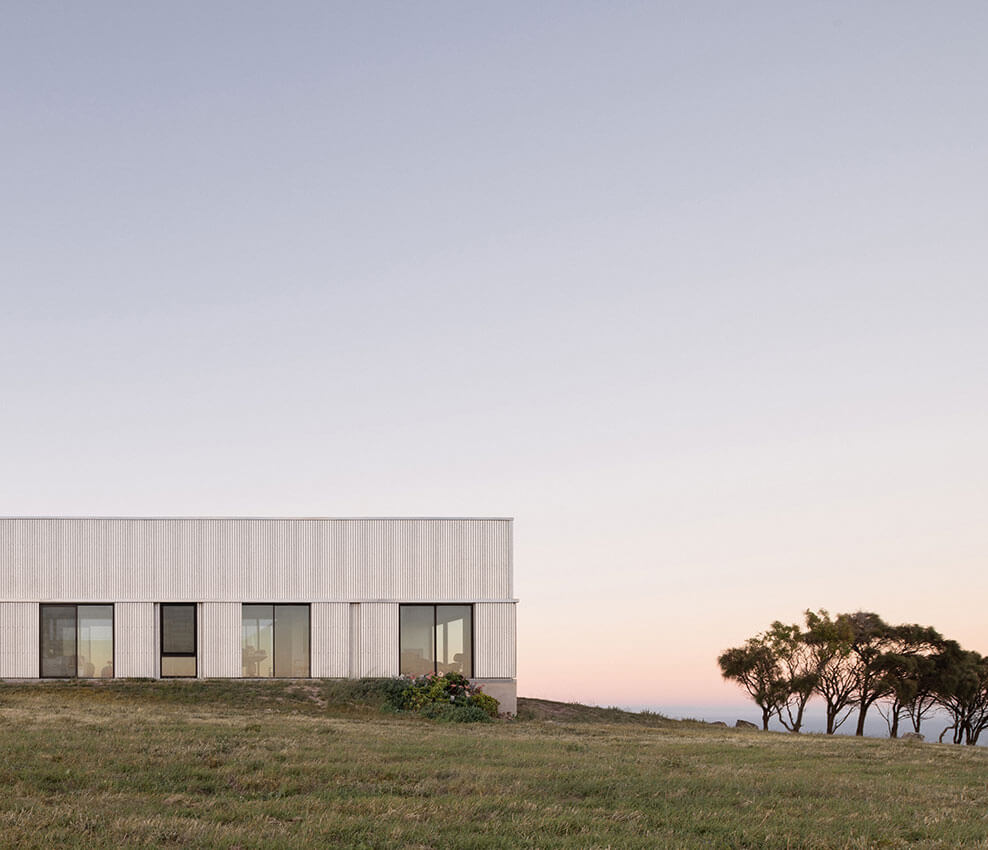
Award for Residential Architecture - Houses (New)
Coast House | Skein
Jury citation
Coast House is a celebration of architectural craft and the beauty of pure, well considered form. Skein have skilfully created a bespoke sanctuary that oozes coastal coolness – a family home tailored to embody the personality and lifestyle of its owners.
The front façade serves as a captivating prelude to the refined architecture within. Thoughtfully planned, the home is divided into two well-proportioned wings, allowing for the duality of public and private spaces. Deliberately placed openings invite the surrounding landscape indoors, allowing glimpses of the treetops to become an integral part of the living experience.
Operable facades provide a playful approach to light and shade, encouraging the owners to engage with their environment. Use of locally milled recycled timber reflects the thoughtful approach to materials, providing warm hues and rich textures typical of the surrounding landscape.
Coast House’s authenticity is undeniable. The home is an exemplar project that embodies a sense of place which is perfectly suited to its occupants.

Award for Residential Architecture - Houses (New)
Henley Beach House | studio gram
Jury citation
Henley Beach House successfully responds to emerging multi-generational living requirements through its clever adaptation to challenging site conditions. Straddling a steeply sloping, narrow site, the house is effectively split over two levels, providing the ability for each level to be used independently when required.
From what would usually be the primary address to Military Road, the 2-storey white gable form quietly contributes to the coastal streetscape. Accessed from this frontage, the lower-level can function as a fully contained 2 bedroom living quarters.
Entry to the upper floor is predominantly via the rear lane. The arrival experience and upper level are thoughtfully executed through clever spatial planning and considered use of materials. The insertion of a central courtyard offers both levels natural daylight and frames distant views.
Henley Beach House exemplifies how a commitment to designing homes that are thoughtfully arranged, honest in presentation and of the highest quality can positively respond to ever-changing housing needs.
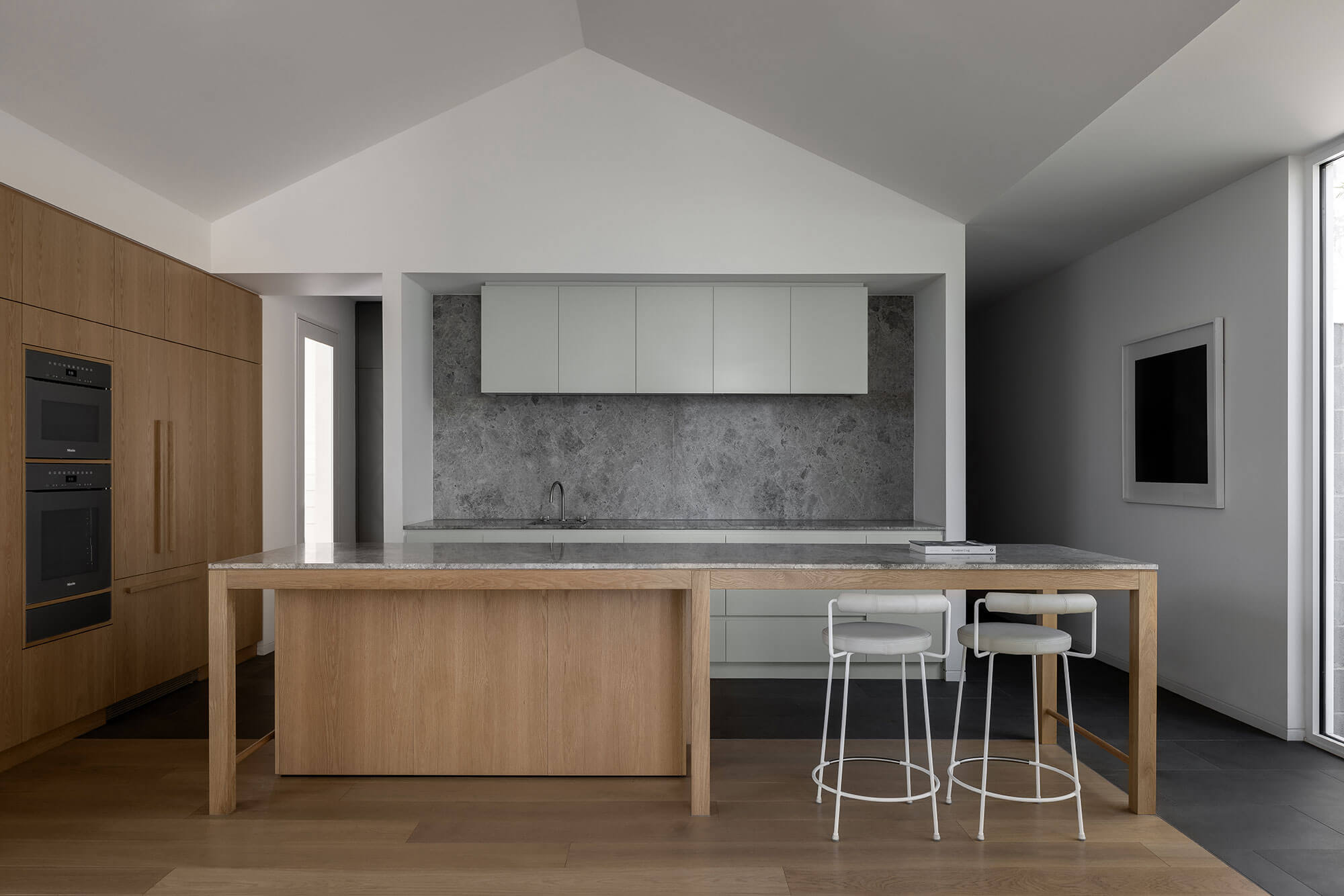
Commendation for Residential Architecture - Houses (New)
Oak Gully House | Max Pritchard Gunner Architects
Jury citation
MPG has worked with the client for Oak Gully House before, and their continuing affinity clearly informs the brief for the growing family. A deceptively simple house, Oak Gully embraces its beautiful setting, celebrating the rolling southern garden and reimagined courtyard spaces. Flow is delightful and a no-frills approach to detailing and material selection provides an honest and warm house that exudes a sense of home.
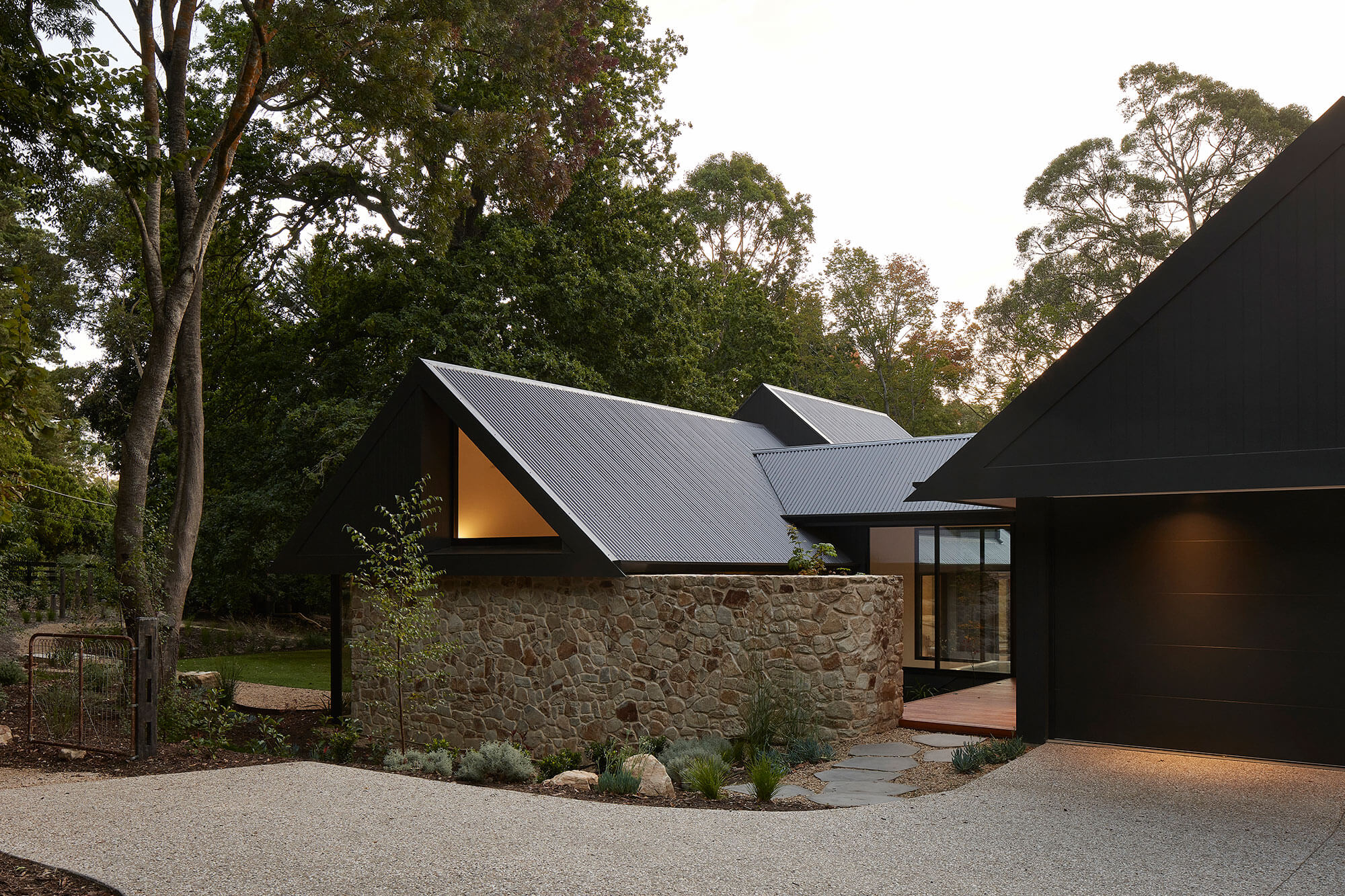
Residential Architecture - Houses (Alts + Adds) Sponsored by AWS
The John Schenk Award for Residential Architecture – Houses (Alterations + Additions)
Sunkissed Higgins | RADS
Jury citation
An eye-catching addition to the Fleurieu surf coast, Sunkissed Higgins is a striking beach shack with a heart of gold. Resisting the obvious move to demolish the existing humble residence, RADS have cleverly provided new living spaces that nestle harmoniously around the retained home.
A skate-ramp edged driveway leads you inside, signposting the whimsy at the core of this home. A succulent-dotted courtyard provides a focal point to the entry, while the sunken, sun-drenched, crazy-paved living room and the functional open kitchen bookend each side and anchor each wing. The humble bedroom proportions are enriched with clever timber joinery and unmatched views of ocean and sky.
The changing nature of the outside landscape is an ever-present protagonist in this home, whether in the delightful detailing of the ensuite portal window to gauge weather and surf, or the bold move of the ombre pink tones of the façade that merge perfectly, every now and then, with the sunset.
A masterclass in parsimonious design, Sunkissed Higgins is bold, beautiful and – due to its generosity to its neighbours, community and neighbourhood – sure to be beloved long into the future.

Award for Residential Architecture - Houses (Alterations + Additions)
House in the City | James Allen Architect
Jury citation
Challenging the status quo of Adelaide villa adaptations, House in the City successfully reinterprets the archetype with a design response celebrating continuity and change.
Designed for a retired couple leaving the country, the new pavilion – with Dutch gable roof and bagged masonry – is thoughtfully articulated. A new courtyard between the transformed villa and addition provides a contemplative threshold.
Steel framed windows articulate new perspectives from within the original villa and evoke an industrial edge. Steel bi-fold doors with integrated screening flexibly open the addition to north facing outdoor areas and an ancillary building. These new openings ensure that life is lived fully within both new and old components.
Flexible joinery and concealed storage lined in hardwood timber cultivate warm, dynamic spaces. The use of ceramics, quartzite and stainless steel is both precise and robust, reflecting the client’s country home origins transposed within a metropolitan context. This is a delightful home away from home.

Award for Residential Architecture - Houses (Alterations + Additions)
Black Box | Archaea
Jury citation
True to its name, Black Box sits in balanced contrast with the white-painted existing dwelling. The family heirloom car, a red 1935 Singer LeMans, adds a striking pop of colour against this interplay of black, white and leafy green Malvern backdrop. This careful balance of black/white, public/private, clean lines and subtle curves is clearly articulated through the architecture and the bold yet considered interiors.
Retaining much of the existing footprint, the addition hugs the building and reinstates the connection with outdoors. The planning carefully considers the existing Willow Myrtle, pool and modern garden studio to maximise siting and outlook.
The kitchen and living space, with striking black ceilings and textural black features, is contrasted by the white gallery wall showcasing the family’s art collection. A gin collection is proudly displayed at the ‘entertaining’ end of the luxuriously long kitchen bench, and a collection of guitars creates another striking artwork in the study.
Black Box’s yin and yang approach celebrates a successful partnership between client and Architect. The result is a home that enriches everyday family life.

Commendation for Residential Architecture - Houses (Alterations + Additions)
JD House | Architects Ink
Jury citation
This deceptively simple, restrained addition at the rear of a symmetrical vila in St Peters, incorporates elegant, pared-back detailing typical of Architects Ink. The ultra-thin rear verandah shelters outdoor entertaining space and separates the addition’s glazed base from the cedar clad top. Rational planning and articulated ceiling volumes create human scaled, comfortable interiors enhanced by timber joinery.
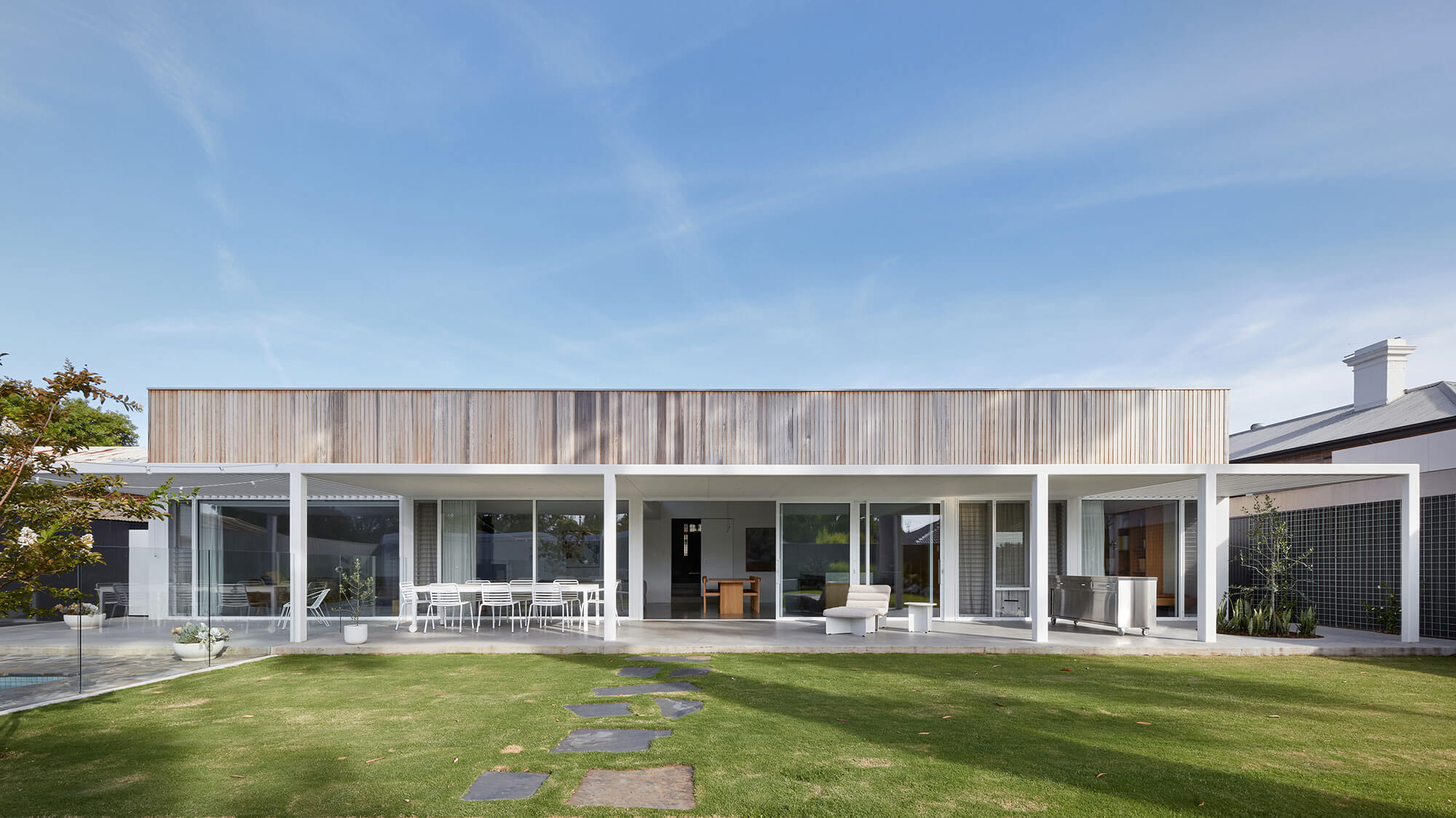
Commendation for Residential Architecture - Houses (Alterations + Additions)
Bung Tooth | khab architects
Jury citation
Part Bungalow, part saw-tooth roof, Bung Tooth is a light-filled addition in leafy Fullarton. The reimagined saw-tooth roof allows this dark interwar Bungalow to embrace its south facing aspect, creating bright rear living spaces that look out onto a cleverly raised pool and courtyard garden. Exposed brick, natural timber and polished concrete give this well-planned addition a warm inviting feel and assist in integrating it into the existing house.

Commendation for Residential Architecture - Houses (Alterations + Additions)
Golden elm house | khab architects
Jury citation
This addition celebrates sunlight, vistas of the city and the gracious golden elm tree in the garden. Old and new connect through white batten cladding, beginning at the new stairs to the basement and transforming to an internal partition. A kids’ wing contains three bedrooms, offering flexible configurations and operable walls, and opens to the elm via a deck. Golden Elm enables interactions between spaces, residents, and the spectacular natural surroundings.

Residential Architecture - Multiple Housing
Award for Residential Architecture - Multiple Housing
Mesa Aldinga Beach | Architects Ink
Jury citation
An update on the traditional Terrace House, Mesa demonstrates generosity to its owners and the public realm. By creating rear access to each home, the presentation to the Aldinga Esplanade utilises integrated landscaping to celebrate its connection to the beachside locale. The building’s plan-form mimics a flock of birds, allowing each terrace a level of external focus and privacy.
A robust but welcoming material palette and considered detailing that prioritises “first fix” finishing, compliments the logical plan. The simple level change between the “jetty” and the bedrooms on the ground floor creates an ambiguous, sheltered space that could be inside or out.
Generous in size, Mesa does not overwhelm. Thoughtful consideration of volume delivers generously scaled rooms, counterpointed by compression and coziness where appropriate.
The result is a delightful series of spaces connected to their location and an exemplar for terrace housing in a coastal environment.
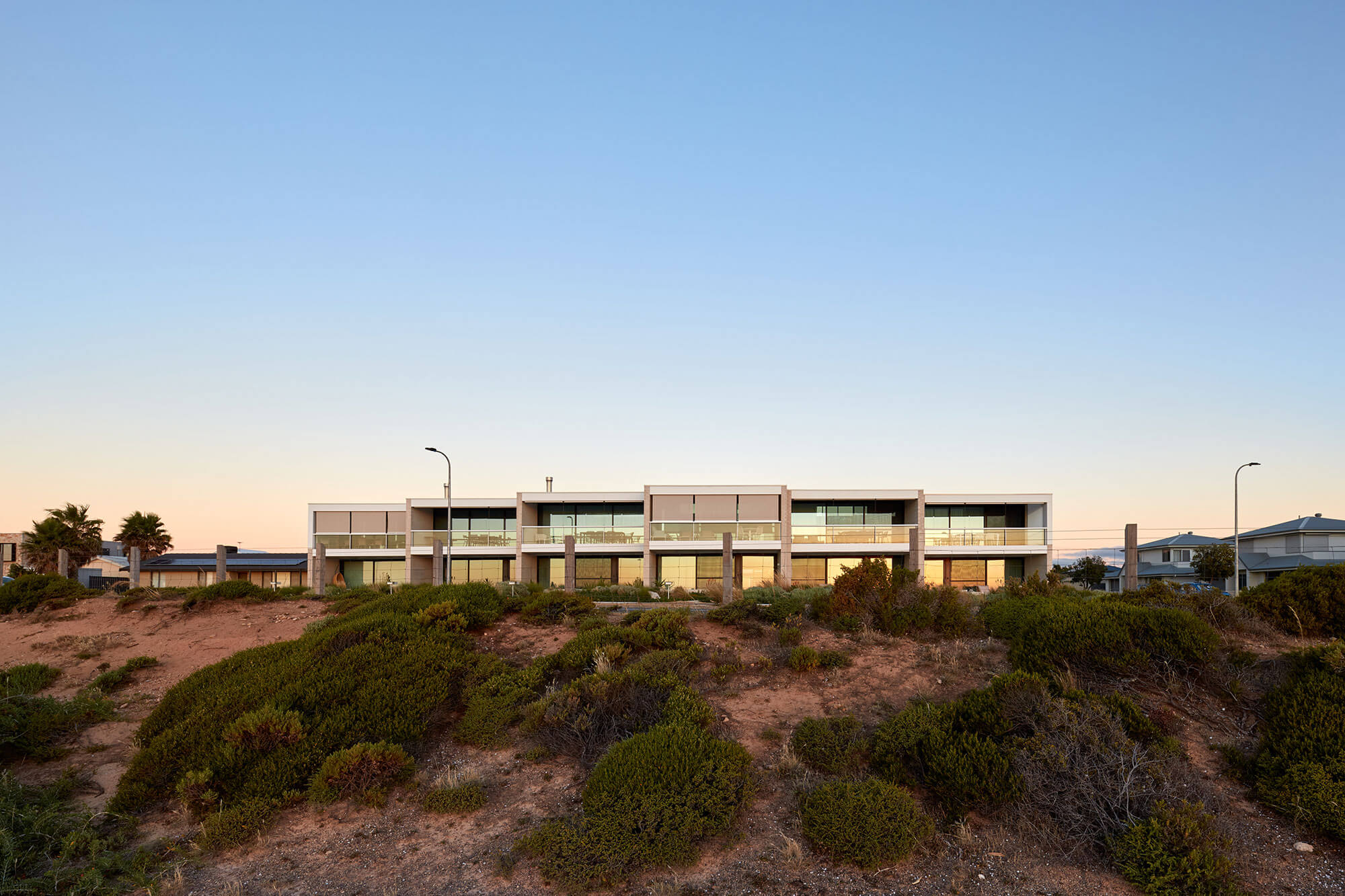
Small Project Architecture
Award for Small Project Architecture
frida and diego: love and Revolution exhibition | grieve gillett architects
Jury citation
The exhibition “Frida & Diego: Love & Revolution” for the Art Gallery of South Australia is a vibrant testament to the passion, love and beliefs encapsulated in Frida Kahlo and Diego Rivera’s art. Bold and inspiring, the design honours the artists’ lives and their artistic community.
The project transformed the gallery space into a culturally immersive and vibrant homage to mid-century Mexico. The team successfully captured the essence of Frida and Diego’s artistic world through use of bright colours, textures and strategic lighting, to enhance the narrative and engage visitors on a deeper level. Creative reuse of materials from previous exhibitions, with the intention for reuse on future exhibitions, demonstrated sustainability.
The bold architectural features, attention to detail and celebration of the artists helped draw record crowds to the exhibition and delivered an iconic experience.

Commendation for Small Project Architecture
ESCA Inman Valley | das studio
Jury citation
ESCA is a modular accommodation suite nestled in Inman Valley. Through careful siting, ESCA appears to delicately hover over the earth. Crafted off-site, it is meticulously designed and minimises on-site impact. ESCA operates entirely off-grid and is equipped with a dedicated fire bunker. Internally, expansive glass invites users to embrace the natural beauty of its surrounds. Artisanal furniture and lighting enhance the guest experience.
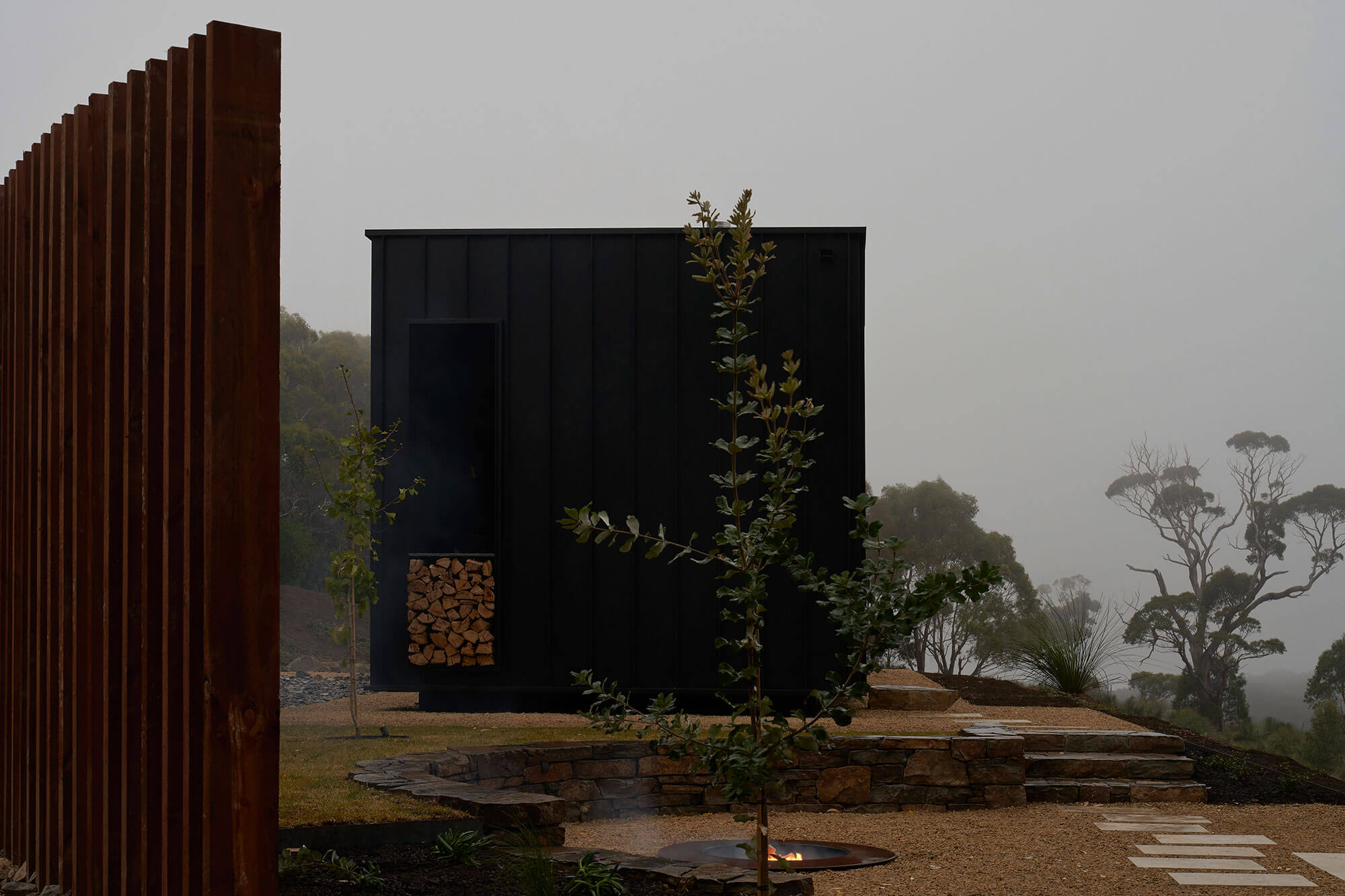
Sustainable Architecture
THE DERRICK KENDRICK AWARD FOR SUSTAINABLE ARCHITECTURE
Arup Adelaide | Walter Brooke
Jury citation
The Arup Workplace is a beacon of sustainability. This innovative fit-out revitalises existing CBD office stock, transforming a conventional space into a sustainable exemplar. The client’s commitment to ‘A Better World’ was the driving force behind this project, which aimed to create a workspace fostering employee health and wellbeing.
The Arup Workplace aspired to achieve Living Building Challenge (LBC) Certification; a rigorous standard rarely attained by office fitouts. The project team embraced the ambitious goals, but also surpassed ESD benchmarks by significantly reducing new materials, reuse and recycling of existing materials, integrating biophilic design principles, and eliminating toxic materials. The project also met a stringent 90% landfill diversion requirement, exemplifying a holistic commitment to sustainability.
The sustainable opportunities, lessons learned, and outcomes are thoughtfully showcased using cleverly designed displays that educate, inspire, and encourage proactive actions toward environmental stewardship within the office and the wider community.
The Arup Workplace showcases sustainability through innovative, beautiful, pioneering architecture. This project demonstrates how thoughtful design can redefine sustainability standards.
Award for Sustainable Architecture
Carrickalinga Shed | Architects Ink
Jury citation
Sited in an isolated and beautiful, yet hostile, location above Carrickalinga, this project sits comfortably, with form and materials drawn from the environment and earlier buildings. The dwelling responds to and embodies the locality and its conditions, allowing all who experience this special place gain a greater appreciation of the land and the climate.
The design allows the occupants to live in different spaces of the house during the day and night, effectively tuning their lifestyle to the local climate characteristics. The classical courtyard form encircles an open garden, providing a sheltered microclimate that can be enjoyed when the surrounding weather is pushing the extremes.
This innovative home seamlessly integrates sustainability into its design and site operations, harnessing renewable energy for power, heating, and cooling. Implementing efficient reuse and recycling systems and incorporating on-site resource management enable its inhabitants not only to live sustainably, but to flourish within their means.
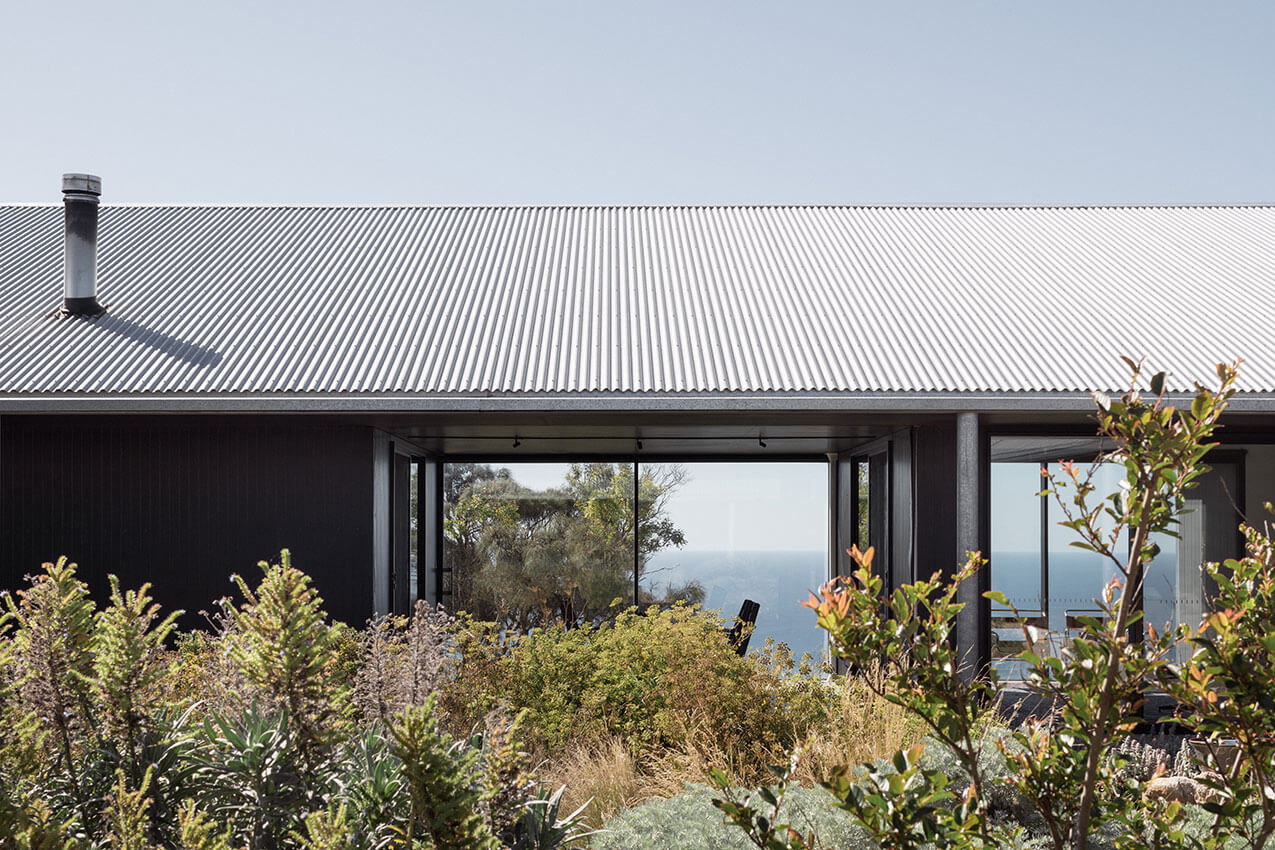
Award for Sustainable Architecture
Scotch College Purruna Spencer Newton Centre | Hames Sharley
Jury citation
The architecture of the Purruna Spencer Newton Centre provides a haven for students and welcomes the community. Learning spaces connect to a wellness facility via a central amphitheatre/stair, creating an engaging and interactive setting.
Plants are employed to shade the building and promoting wellness. Early consultation with local Kaurna knowledge-holders was sought to provide advice on naming and to reference the surrounding flora and fauna.
Materials feel classic and calm and were selected with attention to their environmental impact and anticipated design life. The combination of a solar system, high efficiency, double-glazing, and all-electric building services minimises the project’s carbon footprint.
Designed to allow community use of the pool and fitness centre outside of school hours, the Centre also provides a potential refuge for future climate conditions. It embraces the principles of regeneration, embedding the philosophy that a building can improve the environment and community, rather than simply consuming resources.
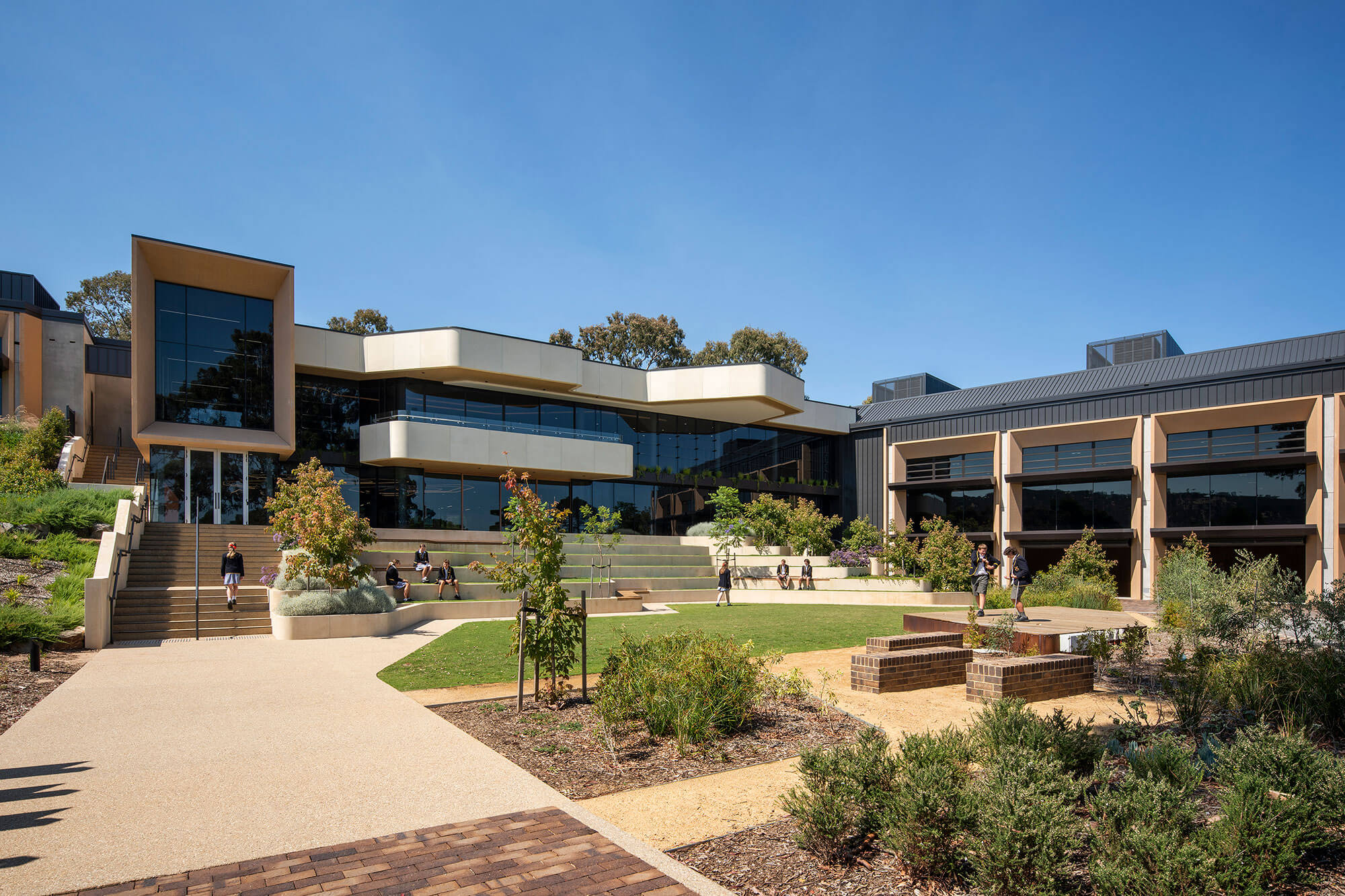
Commendation for Sustainable Architecture
Sunkissed Higgins | RADS
Jury citation
Nestled on the foreshore of Middleton, Sunkissed-Higgins embodies the essence of its seaside locale. The project’s environmental impact was minimised by opting to renovate, not demolish, the original house. Newly formed spaces deliver a building footprint reflecting only what the family needs to function. Passive design principles ensure occupant comfort, and a battery system has covered the family’s energy needs during heatwaves.
